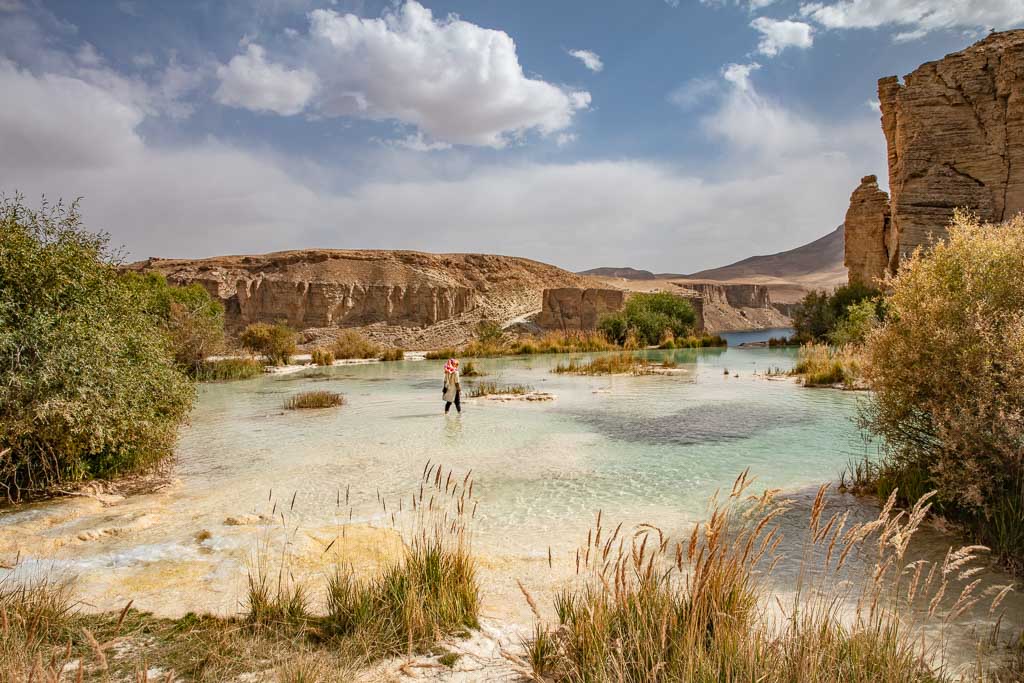
Afghanistan Travel Guide
Updated April 2024, The Afghanistan Travel Guide was originally written in September 2018
Afghanistan, the graveyard of empires and the epicenter of my curiosity for a few years. So much so that I’ve now visited the country several times in the past few years and as of this most recent update have visited now following the regime change in 2021.
Learn everything you need to know from safety to where is possible to visit and more in this Afghanistan Travel Guide.
April 2024 Update: Afghanistan is under Taliban control and has been since August of 2021. Some embassies and consulates are starting to give out visas again for tourists. I know of people entering successfully with visas issued in Dubai, Islamabad, Oslo, Prague, and myself most recently was issued a visa on the border coming from Tajikistan (do not get a visa at the Dushanbe embassy as it’s still staffed by the former regime, more on this later!).
But Is It safe?
In general, no Afghanistan is not a safe country to visit and has not been for a very long time. Visiting Afghanistan is possible, just be aware that Afghanistan travel comes with risks, and safety is not guaranteed.
As of 2023, Afghanistan, in terms of security, has been the “safest” (as in relative to Afghanistan as I’d say visiting the country still comes with risks) its been for travelers for decades. My opinion is that the Taliban is welcoming tourists to help their public image, so these nicities aren’t exactly extended to all of the local populace as you will see.
Under the previous regime, I’ve never felt uncomfortable or in danger while I was traveling in Afghanistan. Mostly the same can be said after my June/July 2023 visit, my first time doing so following the Taliban’s rise to power.
That said, I never felt in danger or threatened on this recent visit, just hassled at a few checkpoints as a solo female (where is you husband/father/brother? why isn’t he with you? Oh divorced? Why did he leave you?), hard to determine as I am Italian-Persian on one side of my family so I can pass as an Afghan with the right clothing, so at times I think I get held to a slightly different standard than say, someone who does not.
So if you’re ready, you’ve versed yourself on the landscape, cultures, religion, and you fully understand the risks involved with Afghanistan travel and visiting a country that’s been at war for nearly 50 years then read on to learn how you too can visit Afghanistan in this Afghanistan Travel Guide.
Need Travel Insurance and Evacuation Services for Afghanistan?
Start shopping for travel insurance plans over at IATI Insurance. Readers of the Adventures of Nicole get a 5% discount off your plan.
The Adventures of Nicole partners with Global Rescue to offer the world’s leading medical evacuation and security advisory services. To travel with peace of mind, shop evacuation coverage at Global Rescue.
- Money
- Language
- Religion
- What To Wear In Afghanistan
- Best Time For Afghanistan Travel
- Getting In
- Visas
- Getting Around
- Afghanistan Travel Insurance
- Food
- Where to Go in Afghanistan
- Trekking In Afghanistan
- Afghan Holidays & Festivals
- Tour Operators & Guides
- Afghanistan Travel Budget
- Packing List
- Guidebooks
- Internet & Mobile In Afghanistan
- Health & Safety

Money
The official currency of Afghanistan is the Afghani. As of April 2024, the current exchange rate is fluttering around $1 USD = 72.50 AFS.
US dollars are widely accepted for larger payments. ATMs are available in the country in major cities, however, they may or may not work. AIB (Afghan International Bank seems to be the most reliable with foreign cards).

Language
Afghanistan is a multilingual country. The two official languages of the country are Pashto and Dari (Dari is more or less a Persian dialect, along with Tajik spoken in Tajikistan and Farsi spoken in Iran).
Dari is spoken more widely in the north and center of the country while Pashto is the more commonly used language in the south and east.
Other languages found in the country are Hazaragi, Uzbek, Turkmen, Balochi, and Nuristani, as well as Wakhi and Kyrgyz that are spoken in the remote Wakhan Corridor.
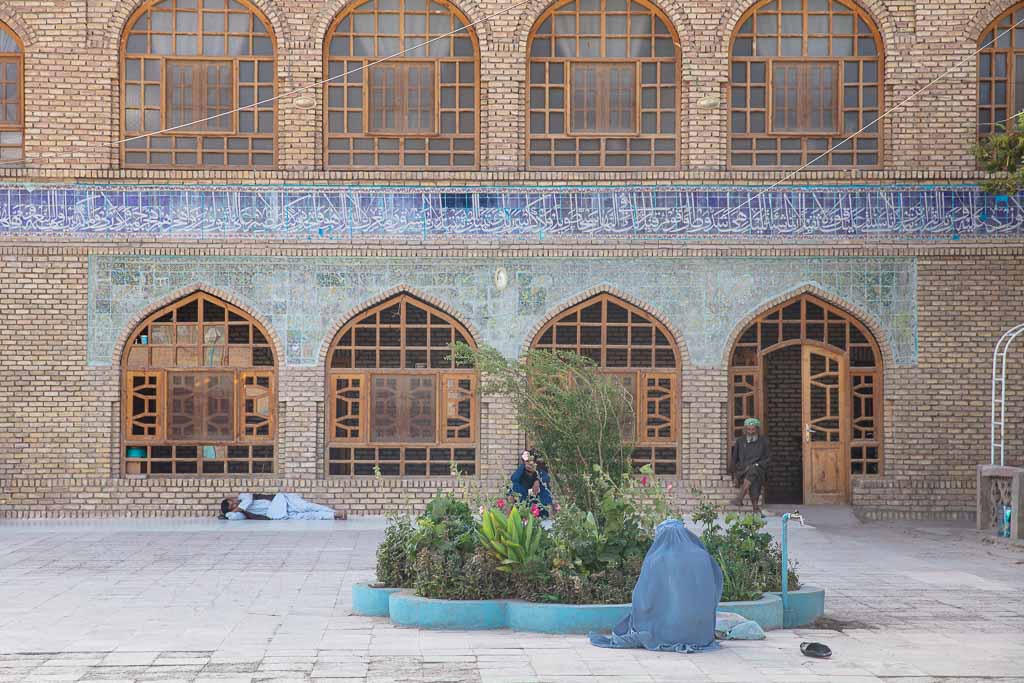
Religion
99% of Afghans are Muslim, with the majority being Sunni. Ismailism is widely practiced in the Wakhan Corridor.
Other Shia Muslims are found scattered throughout the country as well. Other religions are practiced in the country including Sikhism and Hinduism.
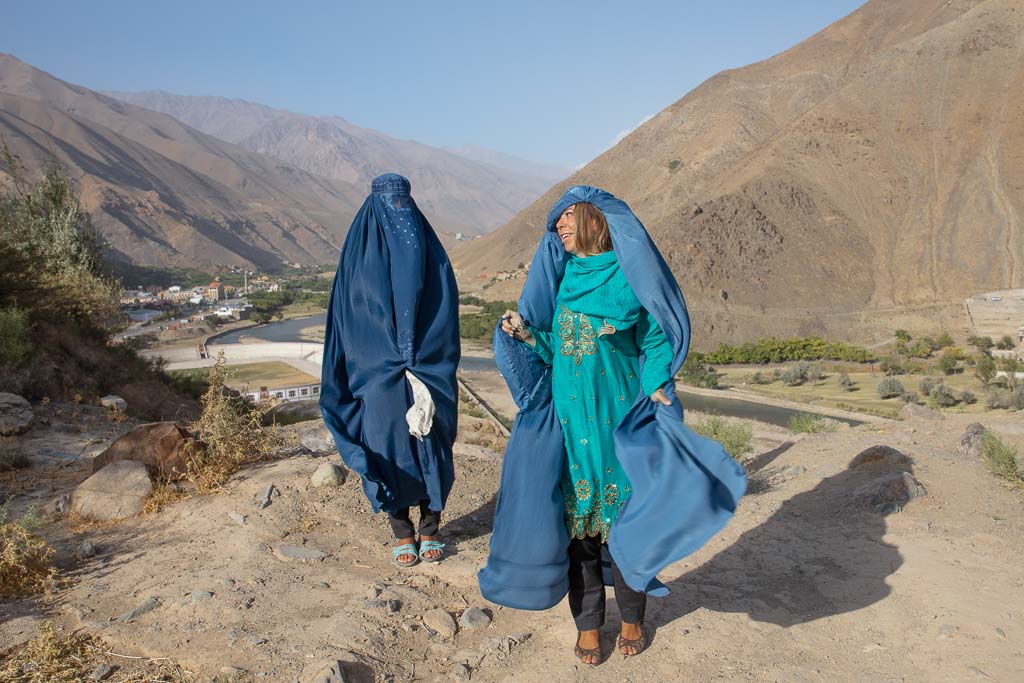
What To Wear In Afghanistan
Dressing in the local clothing styles is the best option while in Afghanistan. It’s always best to try to blend in, plus the Afghans really appreciate to see foreigners wearing their styles.
I highly recommend getting a shalwar kameez when you arrive. A shalwar kameez is basically a long shirt and baggy pants that both men and women wear. It’s seriously the most comfortable thing you’ll ever wear.

For Women Traveling Afghanistan
Women in Afghanistan must dress according to Islamic modest dress, also known as hijab. You should wear long sleeve tops at least mid-thigh in length paired with full-length trousers. Loose, floor-length, long-sleeve dresses are acceptable as well.
Headscarves should always be worn when out in public. Save yourself the hassle and grab a shalwar kameez and a headscarf after you arrive.
In some more conservative areas, you will see the majority of women wearing chadri, chador, or burqa over top of their shalwar kameez. It may be helpful to purchase a chador or chadri to blend in, especially if your travels will take you to more sensitive and conservative areas.
You can purchase ready-made shalwar kameez for 1,000-2,000 AFS on up depending on the quality and a blue chadri will normally cost about 1,000 AFS.
Bonus Tip: At the bazaar buy what looks like a shower-loofah superglued to a plastic hair clip– They usually only cost about 70 AFS. It’s like stuffing your headscarf– it makes it look better, but more importantly, it helps keep your headscarf in place so that it has something to ‘sit’ on the back of your head. They’re called headscarf volumizers.
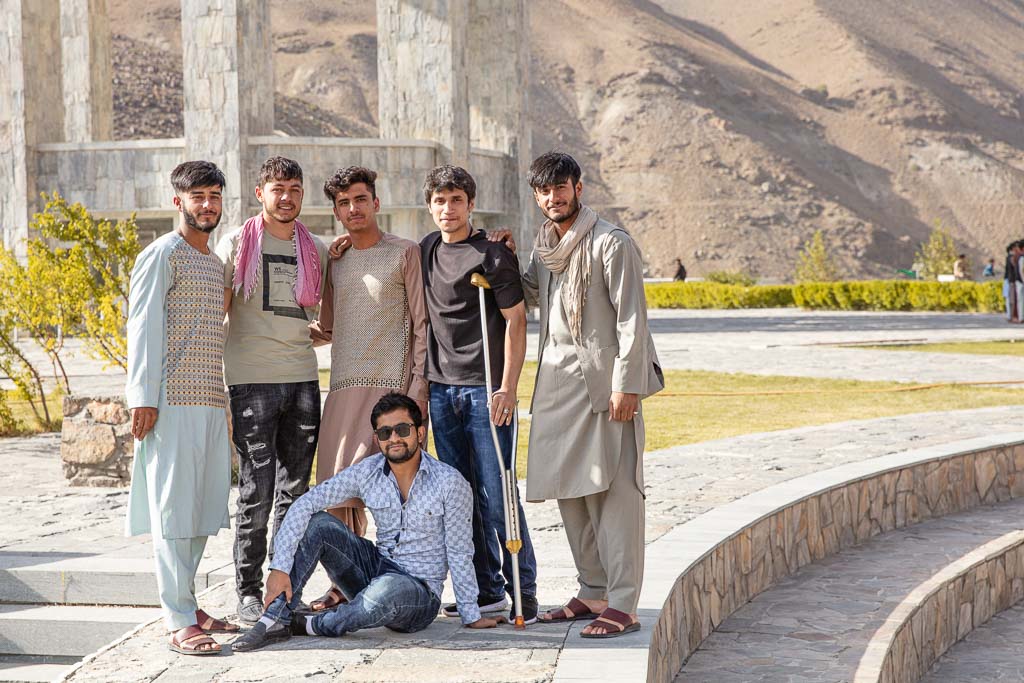
For Men traveling Afghanistan
The shalwar kameez optionally with a vest, sports jacket, or a scarf is the usual get-up for most men. You can purchase premade shalwar kameez, but for the best fit have one tailored.
Fabric and tailoring should cost around 1,200 AFS. If you want to really blend in, pick up a pakol- the flat wool hat worn by many Afghan men. You’ll easily find them in bazaars.
In big cities, you will see men out and about dressed in western clothing like jeans and t-shirts, so western dress in this setting for men should be okay, however, do not wear shorts.
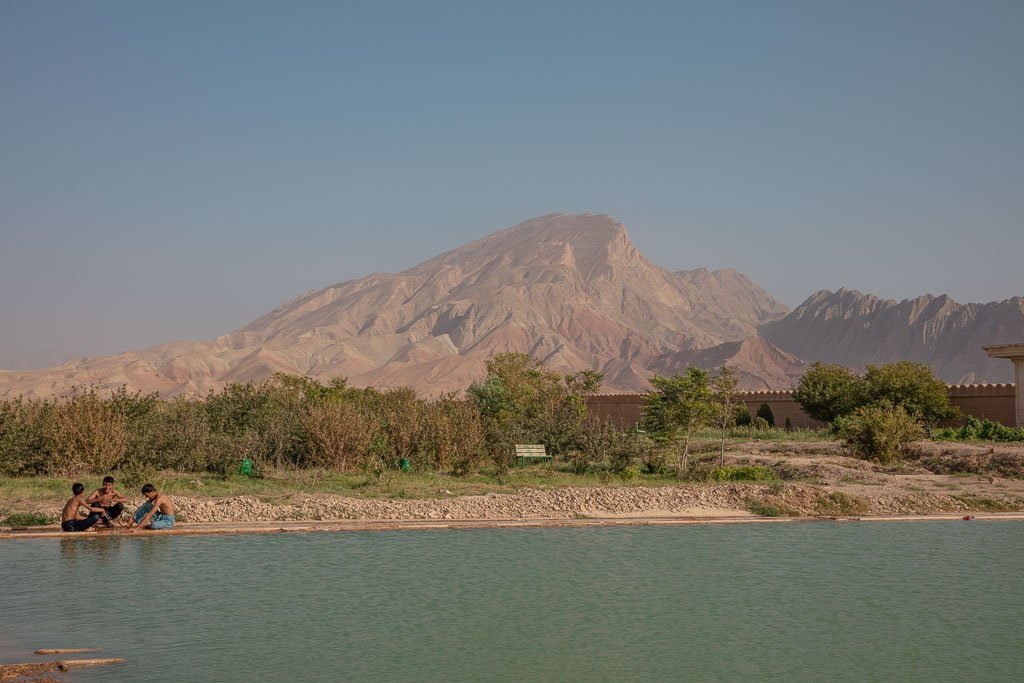
Best Time For Afghanistan Travel
When to visit is largely dependent on where you plan to go in Afghanistan.
Most of the country is most pleasant in the late spring and early fall (April, May, September, October).
The summer months of June-August can be boiling hot in most of the country (after just having done this I can attest to how miserable it feels), however, this is the best time to visit for those headed across the Tajik border into the Afghan Wakhan to trek in the Afghan Wakhan Corridor, as well as mountainous Nuristan.

Getting In
There are two ways in which to enter Afghanistan and that is by flight or by road.
By Flight: Most flights will arrive at Kabul International Airport, with direct connections to the UAE, Turkey, India, Kazakhstan, Uzbekistan, China, and Russia.
By Road: There are many border crossings between Tajikistan and Afghanistan but all appear to remain shut as of 2023 aside from Panji Poyan/Shirkhan and Ishkashim.
The Panji Poyan/Sherkhan Bandar border crossing is open in both directions with visas easily obtainable at the border for $100 USD.
As of September 2023, the Ishkashim border crossing has reopened for those planning to visit the Wakhan Corridor.
The Hairatan-Termez crossing with Uzbekistan near Mazar e Sharif is currently open, but you can only enter Afghanistan here. You cannot exit Afghanistan and enter Uzbekistan here.
Pakistan and Afghanistan have 8 border crossings though the only one I am for sure is open to foreigners is Torkham/Khyber Pass which connects Peshawar and Jalalabad.
Those planning to combine Afghanistan and Iran should use the Islam Qala Border Crossing (Herat-Mashhad) or the Zaranj Border Crossing (Nimruz-Zabol). In my personal experience, Islam Qala was quite easy.
For Turkmenistan, there is the Toraghundi Border Crossing (Herat Province) and the remote Aqina/Imam Nazar Border Crossing (Faryab Province). It sounds like people have crossed more recently at Toraghundi. For Aqina, no word, but I would arrange transport on both sides if attempting as it’s pretty middle-of-nowhere.
Finally, China’s only crossing with Afghanistan is Wakhjir Pass in the far reaches of the Wakhan Corridor. It’s never been open to foreigners (or really anyone for that matter).
I have personally crossed at Ishkashim (Tajikistan-Afghanistan-Tajikistan), Islam Qala (Afghanistan-Iran), Hairatan (Uzbekistan-Afghanistan), and most recently at Shirkhan (Tajikistan-Afghanistan-Tajikistan) and can say that crossings at these posts were simple and easy.
These borders can sporadically open and closed for a myriad of reasons. Check out this Afghan Border Crossings Post on Caravanistan and check the forums for updates if planning to enter by land.
Afghan Land Border Crossings From My Personal Experience
Tajikistan-Afghanistan at Shirkhan Bandar: Completed in June 2023 (entered) and July 2023 (exited). Shared taxis leave Dushanbe’s Sakhovat Bazaar for Bokhtar (formerly Qurgonteppa) for 40 TJS per seat. Once to Qurgonteppa, you’ll need to get another shared taxi (or may need to just hire the entire car) to Panji Poyan for 50 TJS per seat (around 100 TJS for the car).
On the Tajik side you’ll wait by a gate for a car or van to show up that will take you to the Tajik immigration building for 10 TJS/100 AFS per person. You’ll go through a quick customs search and get your exit stamp. Once out, wait for another van or car to take you across to the Afghan immigration facility for another 10 TJS/100 AFS.
Here you’ll go through a body search and they will go through luggage before sending you for your entry stamp. If you do not have a visa, you will be instructed to go to an adjacent building to buy the visa. I would recommend getting the visa on the border! I had secured one from the Dushanbe Embassy only to be told it’s not accepted here as the embassy in Dushanbe is still staffed by the previous government, so moral of the story is do not get your Afghan visa in Dushanbe.
You will need to pay $100 USD, fill in an application, write a letter of responsibility, and provide 4 passport photos and after that you are in Afghanistan but you’re not finished yet- you must go to the Ministry of Foreign Affairs in Kunduz City for an approval stamp on your visa.
For exiting Afghanistan back to Tajikistan at Shirkhan, the process is more less the same, just in reverse. Once you are dropped off at the gate in Tajikistan (after you’ve gone through customs and immigration and taken the van to the gate) you will find shared taxis bound for Dushanbe just outside for 200 TJS per seat and expect around 100 TJS if planning to only go to Qurgonteppa.
Afghanistan-Iran at Islam Qala: In late March 2019 I crossed from Afghanistan to Iran at the Islam Qala-Dogharoun crossing. Procedures exiting Afghanistan were straightforward, you go into a shipping container first for a body check and after completing walk out and over to the immigration building. There will be one line for men and another for women and children.
Your passport will be scanned, you’ll be fingerprinted and you may be asked some questions like where are coming from/going, etc. You will then be asked to show your Iranian visa and then be stamped out.
On the Iranian side, you will hand over your passport and visa and get stamped in. Next, you will put your bags through an X-ray and your electronics may be checked.
You will then put your bags back in the car and you’ll drive a little further up where you will go through customs. Here you will likely have to empty out all of your bags for the search. Read about my entire border crossing experience here.
Shared taxis depart from Herat daily. A seat will cost you 1,100 AFS. Ask your guesthouse or hotel to arrange one for you.
Uzbekistan-Afghanistan at Hairatan: Crossing the border from Termez to Mazar e Sharif was quite simple and straightforward. From Termez, it’s possible to grab a taxi to the Hairatan border for about 30,000 UZS with some haggling.
You will be dropped off at a checkpoint about one kilometer before Uzbek border control and from here you’ll want to take a shuttle bus (sometimes it’s just a marshrutka) to the border office for 5,000 UZS. There will be hawkers at the checkpoint offering rides across the border for 400,000 UZS, ignore them.
Once you arrive at the border office you’ll put your luggage through a scanner and then you’ll have your passport stamped out of Uzbekistan. When you are finished and have officially exited the country, go outside. You can either walk the kilometer over the Friendship Bridge to Afghan border control, or you can wait for the marshrutka and pull 5,000 UZS to the other side.
Afghan border control is easy, you will first have your visa checked and be stamped into the country. Next, you’ll put your luggage through a scan.
Once finished, you will proceed to the parking lot outside where you can find money changers just across the street and shared taxis to Mazar e Sharif. If you’ve arranged someone to pick you up, or a guide they will be waiting in this lot. If taking the shared taxi, plan to pay about 200 AFS per person.
Tajikistan-Afghanistan at Ishkashim: In September 2017 I visited the Wakhan Corridor and the border crossing in both directions is pretty simple. From Tajikistan to Afghanistan you’ll go into the immigration building at the border post 3 km out of Ishkashim.
Here you’ll hand over your passport and Tajik e-visa (or not if you have a visa in your passport from an embassy). You will also need to show your Afghan visa. Here you’ll get stamped out and then walk through the fence gate and across the bridge into Afghanistan.
In Afghanistan, you will enter the immigration building and get stamped in. The only way to get to Sultan Eshkashim on the Afghan side is by taxi for $20 USD, or to walk. If you have not arranged this previously the officers at the border will call a car for you.
Read about my entire border crossing experience in both directions here.
Leaving back to Afghanistan will be the same process only in reverse. Make sure you have a multi-entry Tajik visa.
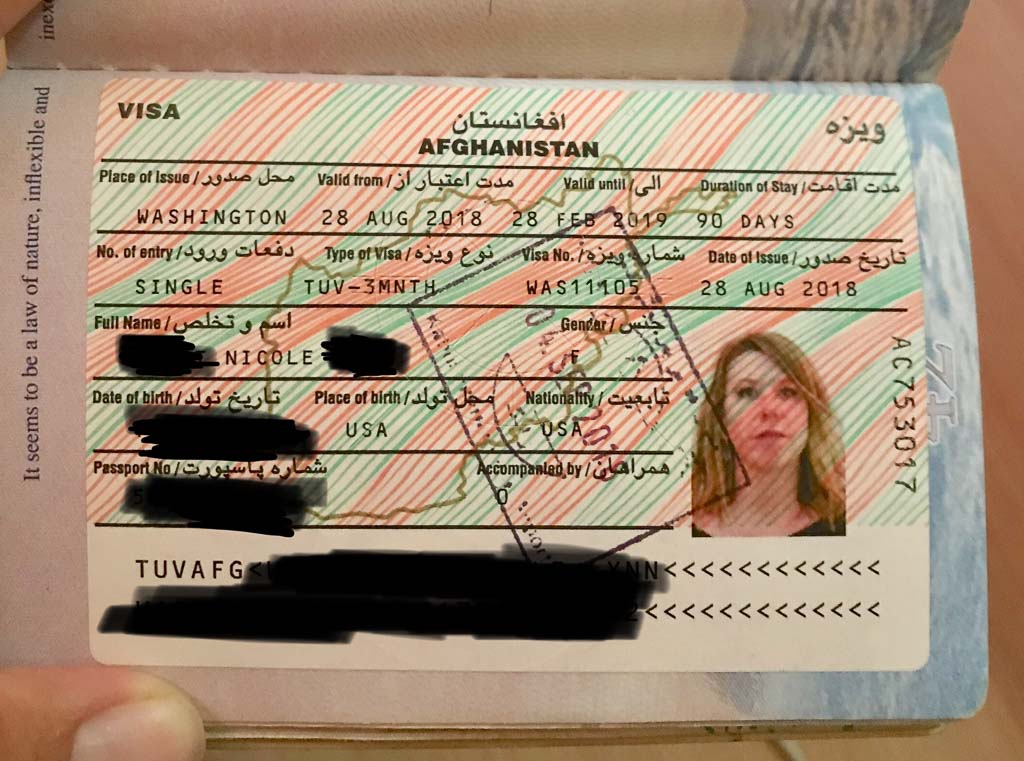
Visas
All visitors to Afghanistan are required to get a visa in advance before arriving in Afghanistan. Visas are typically given for 30 days within a 3 month window and are usually single entry.
Many embassies and consulates will not issue tourist visas to Afghanistan for obvious reasons. I can personally say that obtaining an Afghan Visa at the Afghan Consulate in Khorog, Tajikistan; by mail from the Washington DC Consulate in the USA; and on the border at Shirkhan Bandar were painless and simple.
In 2017, I went to the Afghan Consulate in Khorog by myself at 9:30 am and walked out about 30 minutes later with the visa in my passport, you can read more about how to get an Afghan Visa in Khorog here.
In 2018 I applied via the online application system from the Washington DC Consulate and then mailed my required documents in and had no problems, the process took about 4 weeks (normally it only takes 2 weeks to complete but the consulate closed for over a week for the Eid al Qurban holiday). I applied for a visa again in 2019 and received it in about 3 days. Read embassy and consulate reports from other countries here.
In 2018 & 2019, I applied for visas using the online visa system through the Afghan Consulate in Washington DC. The process is simple and straightforward. For my visas in 2021 the online system was discontinued so I had to fill out all the documents and mail them).
In 2023, I applied for an Afghan visa and the Afghan Embassy in Dushanbe only to be denied entry with it on the border (I was a bit of a lab rat for this process) but easily obtained the visa on the border at Shirkhan Bandar.
April 2024 Update: I have received updates from travelers who have successfully gotten visas at embassies in Islamabad, Dubai, Prague, and Oslo. Myself, as you’ve read above had success getting a visa on the border coming from Tajikistan. Anyone with updates to add here, feel free to leave a comment at the end of the post or email info to me and I’ll include it in this post for other travelers.
What You Will Need To Apply
Filled in and signed visa application, 1-4 passport photos depending on the embassy/consulate/border, 1 valid passport, visa application fee, and a letter stating that you take full responsibility for your safety in Afghanistan and planned itinerary.
If applying in a third country, the consulate may require you to bring a letter from your own embassy clearing you to go.
Permits
Permits are needed to travel pretty much anywhere in Afghanistan these days. If you will be traveling using a guide, make sure to agree on an itinerary so that they can gather the proper documents in order to travel around everywhere you wish.
If traveling independently, the easiest way to go about this is to have a guide or agency issue a paper and gather a permit for your first planned destination and beyond that you’ll need to figure out the location of the Ministry of Culture in every province you plan to visit to get “necessary” permissions.
By necessary, I mean that you are supposed to have a permit that gives you access to that province and certain destinations within. That said, many Taliban soldiers are illiterate and won’t be able to read the permits anyways, but there is the off-chance you get caught by someone who is literate and does know the rules, which could mean trouble for you (at best a scolding, at worst a detention center or jail).
As of March 2024 permits are still required and are free. In summer 2023, permits cost 1000 AFS per person for each province.
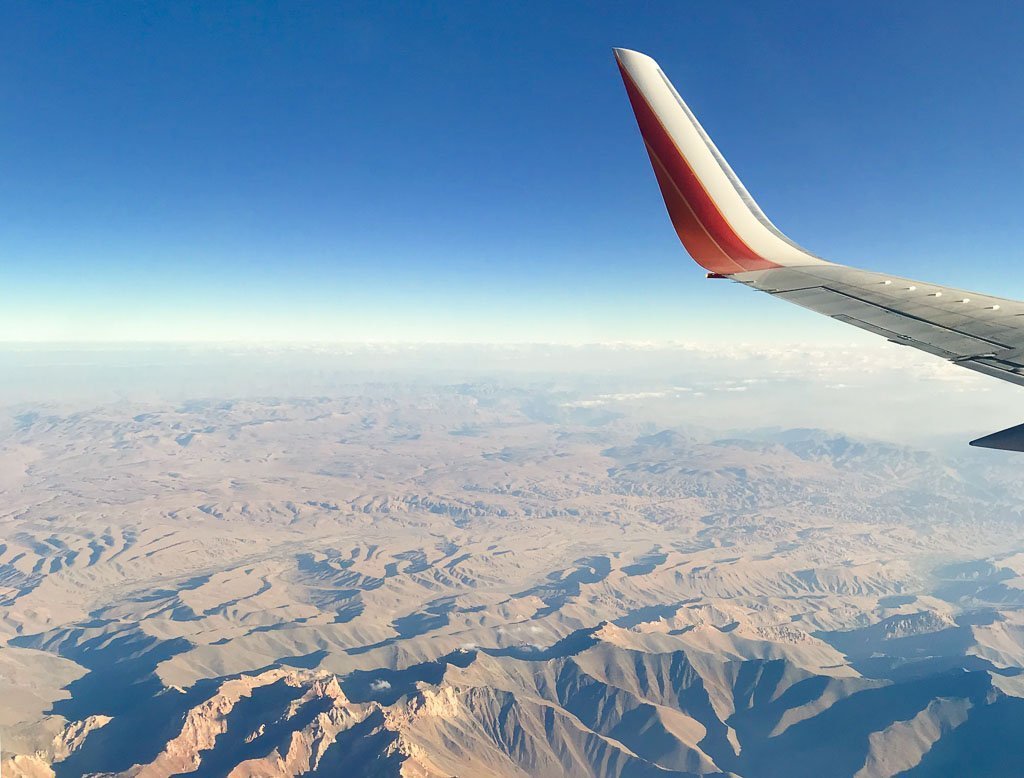
Getting Around
Things have changed as 2023 and you can visit just about everywhere in the country by road provided you’ve attained the correct permits. That said, flights are still popular to cut down on some of the long distances and in some prats, horrible roads.
Checkpoints
You will certainly encounter frequent Taliban checkpoints traveling around Afghanistan now. In cities, between cities, even places seemingly in the middle of nowhere like a hike to a cricket pitch near the town of Parun in Nuristan.
In my experience, many checkpoints they just waved the vehicle I was in through, sometimes they would stop the car and peer into the windows. At others they would ask to see my passport and/or permits.
Only a small few times was I hassled at checkpoints and lectured that women are not allowed to travel without a male guardian and how they weren’t going to let me through (after a few phone calls they always did) and questioned about where I was going, where I came from, even about my personal life and even had my phone searched (to his dismay, there’s nothing racey on there).
At one I don’t think they’d have let me beyond had I not had a driver advocating for me. I can’t speak for male travelers on this, but female travelers (traveling sans man) should be aware that you may face some annoyances in this category.
By Flight
Obviously the fastest option for traveling between cities.
Airlines
Kam Air serves Kabul, Herat, Kandahar, Mazar e Sharif.
Ariana Afghan Airways serves Kabul, Herat, Mazar e Sharif, and Kandahar.
Kam Air and Ariana are the main two airlines in the country, although Kam Air does tend to have fewer delays and cancellations (but they still have lots of delays and cancellations). Another small airline offering flights in Afghanistan is Safi Airlines.
Costs & Where To Buy Tickets
Most flights will range from $50-110 USD each way between cities. You can purchase tickets online for some airlines such as Kam Air, however, prices tend to be a bit cheaper if you book in a ticketing office. Plan to pay in cash if purchasing at an office.
Going To The Airport
Taking a flight usually involves going through at least two security checkpoints to enter the airport and a third to reach your gate. You can typically expect to be asked to place your bags on the floor in a line and told to wait after the second X-ray checkpoint where bomb-sniffing dogs will be brought out to inspect bags.
Men and women will have a full-body pat-down usually at the first security checkpoint, of course in separate areas. The women’s security will almost always be behind a curtain.

By Taxi
You’ll see many yellow Toyota Corolla taxis around Afghanistan, particularly in cities. In some cities, such as Ghazni City and Jalalabad, tuk-tuks seem to be the popular taxi. Taxis almost never have meters so agree to a price before departing.
Typically rides within a city will come out to 70-400 AFS depending on the distance. These taxis can also be negotiated with for day trips as well. Prices will depend on where you are planning to go, but usually will range from $20-50 USD in most cases.
It is possible to hire taxis for longer distances too but you’ll need to negotiate a price before departure.
By Public Bus & Shared Taxi
Public buses are available in most cities. You can expect most rides to cost no more than 10 AFS.
For longer distance trips between cities, there are usually buses and shared taxis available ranging in price depending on the distance. You can use these, however, unless you speak Dari and/or Pashto you might find checkpoints to be a headache.

The Wakhan Corridor
Realistically the only way to travel the road in the Wakhan beyond Ishkashim is by private taxi hire which can be quite expensive. As of summer 2023, guides from the Wakhan are trying to hold meetings to reduce this cost, but we’ll see what happens.
Best to try and find other travelers to cost-share on a Wakhan trip with. It is possible to go trekking by horseback and even yak. Donkeys are commonly used to porter gear and supplies on treks.
Read more about the Wakhan Corridor here
Afghanistan Travel Insurance
Not many insurers cover high-risk destinations such as Afghanistan.
Personally, I recommend IATI Insurance for travel insurance. Readers of the Adventures of Nicole get a 5% discount off theirplan.
Those looking for medical evacuation and security advisory services should check out plans with Global Rescue.
Do research if the company you choose is going to cover Afghanistan as these policies seem to change quite frequently and with little notice, US passport holders seem to face the most difficulty in obtaining travel insurance for Afghanistan and other high-risk destinations.
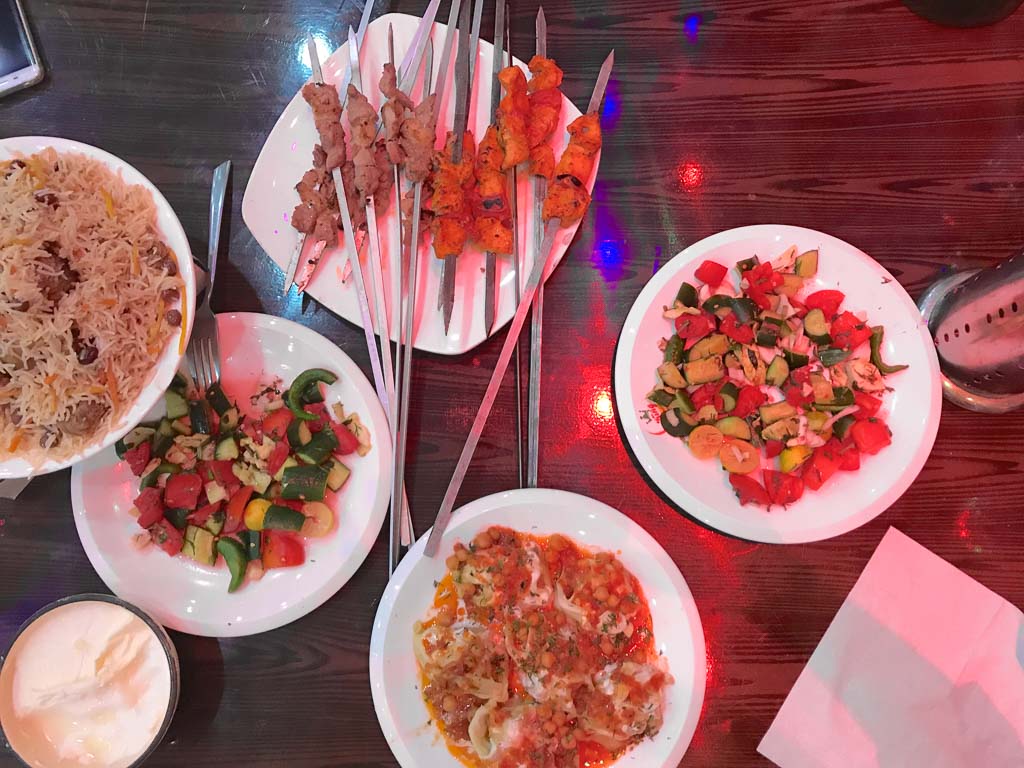
Food
Afghanistan is at the crux of food paradise with influences from Persia, South Asia, and Central Asia. The national dish of Afghanistan is Kabuli Pulao, and you can expect naan and chai to accompany most meals and snacks. This is a quick snapshot of Afghan cuisine, but do know that dishes can hyper-regional in Afghanistan.
Afghan Dishes to try
- Qabuli Pulao: a fried rice dish that’s typically spiced and has a chunk of beef or mutton cooked in it
- Mantu: A delicious meat filled dumpling and covered with beans and yogurt
- Ashak: Similar to the mantu but stuffed with spinach
- Chicken Karahi: One of the most popular dishes throughout South Asia. The wok it’s cooked in is called a karahi. The dish usually includes chicken, tomatoes, onions, garlic, and spices
- Kebab: Skewers of meat, typically chicken, beef, or lamb. Koobideh (spiced ground meat) and chicken are my personal favorites
- Naan: The ubiquitous bread you’ll have with every meal
- Chai: Along with naan, chai will accompany almost every meal, bazaar sale, meeting with new strangers, etc
- Challow: White rice
- Shirbirinj: A common staple throughout Afghanistan. It translates out to milk rice. Usually served with a crater filled with butter on top and a bowl of sugar on the side
- Qorma sabzi: a mild curry dish of spinach and usually included beans and chunks of meat. Meat-based qormas exist too, qorma is very similar to curry
- Dooh: A salty, sour yogurt drink, typically served with chopped mint blended in it
Where to Go in Afghanistan
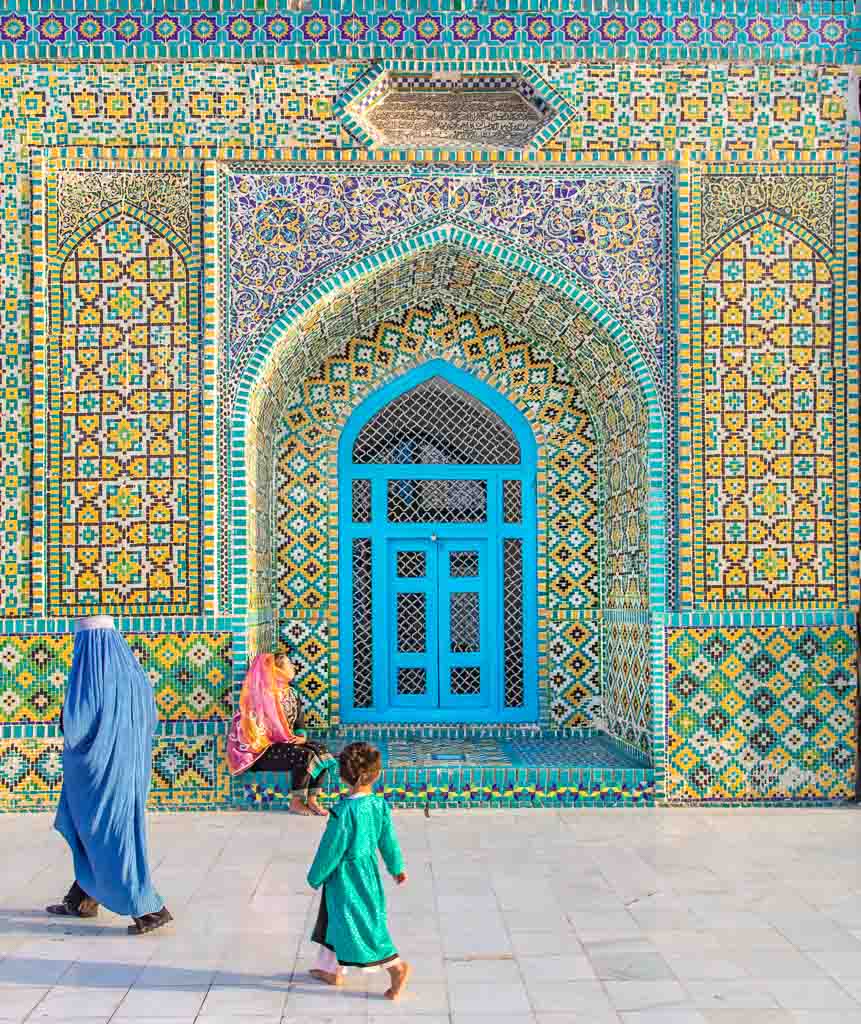
Kabul
Most travelers’ introduction to Afghanistan will be in Kabul. The city is famous for Kabulian hospitality and a long history, but with that said the city has seen much damage between 1979-2001.
What To See In Kabul
- Shrine of Sakhi: A beautiful shrine located at the foot of TV Hill in West Kabul. It’s an important Shia Muslim site, believed to be where the cloak of Mohammed was kept until it was moved to Kandahar. Shrine of Sakhi is the only park (as in the grounds around it) that Afghan women are permitted to visit
- Shah do Shamshira Mosque: In what some call Afghan Baroque-style, Shah do Shamshira is quite unique from the smattering of mosques you’ll see around Afghanistan. Located in the south of the city, it is nearly impossible to miss
- Gardens of Babur: Dating back to 1528, this is the final resting place of Mughal Emperor Babur. Babur Gardens has undergone extensive restorations after being badly damaged during the Afghan Civil War. Note that Afghan women are not allowed to visit any public parks or gardens, so female travelers will likely need to argue that they are in fact, allowed to visit
- Chicken Street: Good place to pick up souvenirs and trinkets to take home. Chicken Street was a staple along the 1960s Hippy Trail
- Qargah Lake: About 15 km west of Kabul on the way out to Paghman Valley, Qargah makes a great spot to escape the bustle and grab a lakeside meal, have a picnic, or relax. The lake is actually a reservoir
- Bibi Mahro Hill: A great spot to head for sunset over Kabul. There is an Olympic sized swimming pool up top, though it’s almost never been used for its intended purpose. The diving board was used during the Taliban reign for public hangings. I was hassled getting in here by Taliban manning the entrance as it fits the “park” category, finally after showing my passport and permits they finally allowed me in and then later thanked me for visiting and wearing Afghan attire
- TV Tower Hill: Named because it’s where many channels are broadcasted from, but for a tourist TV Hill offers sweeping views of the city
- Ka Feroshi Bazaar & Bird Market: One of the oldest bazaars in Kabul where you can find just about anything. The Bird Market is one of the most photogenic places in the city, watching local buys and sellers haggle over doves, partridges, parrots, finches, canaries, chickens, and more. Be careful about belongings here as pickpocketing happens frequently. The area is also known for plenty of seedy characters that hang around it. Not as lively as it once was following the Taliban takeover
- National Museum of Afghanistan & Landmine Museum: Both museums are worthy of a visit to learn a bit more about Afghanistan’s distant and more recent history
- Chehel Situn: A lovely garden of brick pathways lined with tall trees and roses. A nice spot to relax and picnic, meet locals, or play games. As with other parks, ‘no girls allowed’ so plan to argue to get in if a woman.
*There is an 100 AFS entrance fee for the National Museum, and an 100 AFS entrance fee to enter the Gardens of Babur. Chehel Situn has a 100 AFS entry fee, plus 350 AFS additional for cameras.
Plan your visit to Kabul: The Kabul Travel Guide
Kabul Day Trips:
- Panjshir Valley: Located north of Kabul, you’ll find more details about it in the next section
- Istalif: Located about two hours north of Kabul by taxi. This scenic village is known for its impressive ceramic works. A taxi there and back should cost around 3,500 AFS
- Paghman: Unfortunately as of 2021 visiting Paghman isn’t recommended due to insecurity. Located west of Kabul beyond Qargah Lake, Paghman is a great place to relax for the day and have a picnic if safety improves.
Where To Sleep In Kabul
- Midrange: Baharistan Arya Guesthouse $40-45 USD per night, double
- Midrange: Cedar House +93 7 0028 5843 $50 USD per night, double
- Splurge: Kabul Serena Hotel
Getting In & Out Of Kabul
Panjshir Valley: A hire of a taxi for the day to the Panjshir Vally and back to Kabul will cost around $45 USD.
Bamyan: At the time of writing (October 2018) and of my visit (September 2018), the only way to reach Bamyan is by road. If you are determined to visit despite there being no flights, I 100% recommend making the journey with a private car/local guide as the road passes very near to Taliban controlled areas– with the help of Let’s Be Friends Afghanistan we were able to make the journey without issue. There are shared vans that depart Kabul in the early mornings for 400 AFS to Bamyan as well but are not recommended at this time. If going by road, only use the route via Charikar and Ghorband, the shorter road via Wardak has stretches controlled by Taliban.
Mazar e Sharif: You can reach Mazar by flight for about $85 USD (one way) daily from Kabul. In the past it was possible to drive to Mazar e Sharif from Kabul, but as of 2021 there is instability around the city of Pul e Khumri in Baghlan Province with some Taliban checkpoints popping up. If things improve again, you can either hire a taxi or take the 600 AFS bus.
Herat: A long journey from Kabul, expect many hours on the road. Advisable to fly.
Kandahar: Flights are your best option to reach Kandahar with tickets running around $85 each way. There is a highway that connects Kabul and Kandahar in roughly 6 hours’ time.
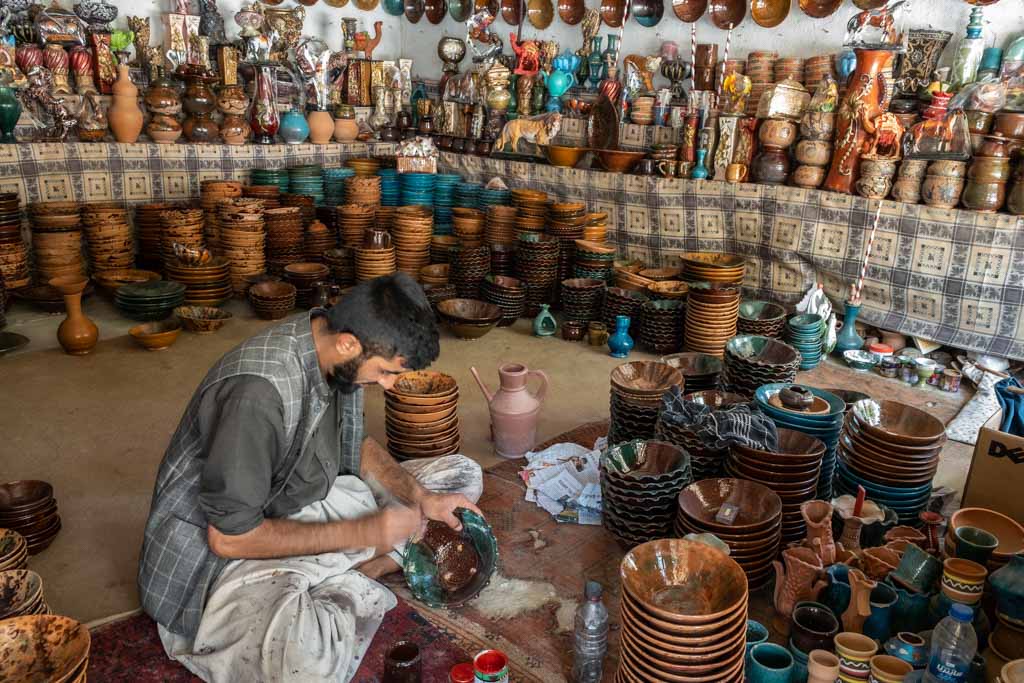
Istalif
Located only 30 km north of Kabul, Istalif makes for a nice day trip to escape the chaotic city traffic. Istalif is famous for its handmade glazed pottery and it’s pretty common for Afghans to come from far and wide to do shopping here. There is one main thoroughfare that you can find a number of pottery shops along where you can even see artisans at work on their wares.
By western standards the pottery here in Istalif is incredibly inexpensive- I managed to pick up a large platter for 150 AFS, a large bowl of 100 AFS, and a coffee mug for 70 AFS. You will need to be able to do some bargaining though and if sellers sniff out that you’re foreign you can expect to be quoted significantly higher prices.
Istalif is framed by gorgeous mountains, making it a great day trip. There are outdoor chaikhanas set up in the forest along the river too making for a nice place to grab lunch and relax.
You can make arrangements with a taxi driver in Kabul to take you out here, wait and bring you back. Plan to pay around 1,500-2,000 AFS depending on your bargaining skills.
Read up more about the damaged ceramics city of Istalif
Parwan
To be honest, Parwan is a place you will likely just pass through on your way from Kabul to Bamyan, Panjshir, or Mazar e Sharif.
The main town to know of in Parwan is Charikar as this is the turn-off to go toward Bamyan.
Samangan
- The Takht e Rustam Buddhist Stupa: An interesting stupa sat on an island of rock
- Buddhist Caves & Ancient Bazaar: An old bazaar just down the hill from Takht e Rustam. Houses a Buddhist temple, though the murals have been removed
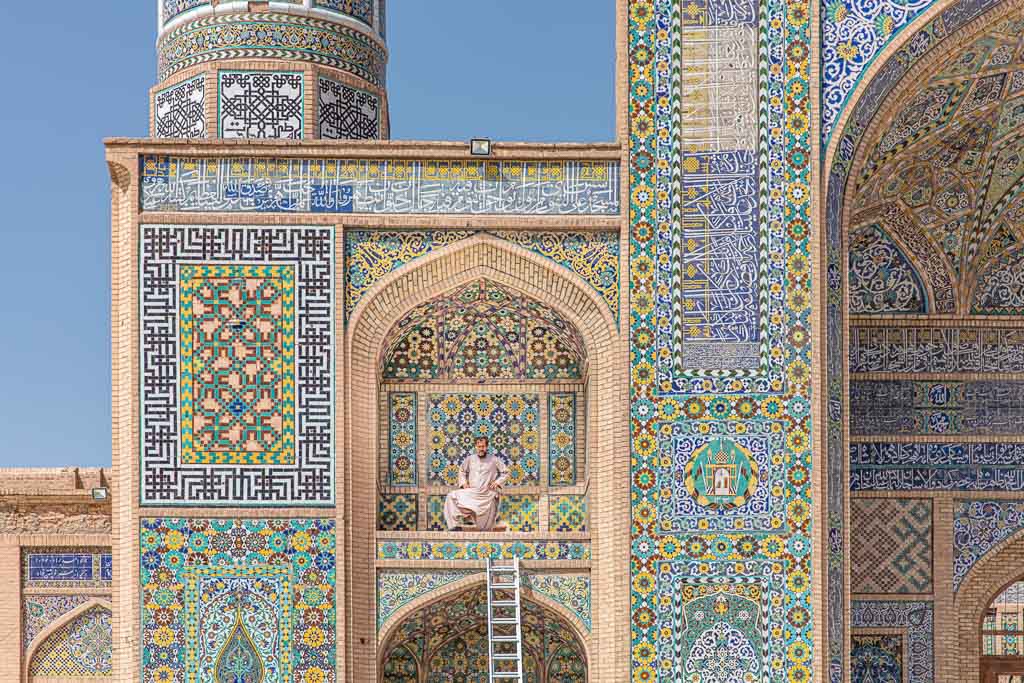
Herat
With over 3,000 years of eventful history, Herat is a cultural and historical center in Western Afghanistan. Given its proximity to the Iranian border, Herat bears quite a semblance to its neighboring country from architecture to Herat’s women’s preference for the black cloak-like chador over the ubiquitous blue Afghan burqa seen throughout much the rest of the country.
Herat is centered around the well-restored Herat Citadel with the Masjid i Jami (The Great Friday Mosque) situated nearby, along with a fascinating bazaar, caravanserais, and mausoleums.
What To See In Herat
- Masjid i Jami (Friday Mosque or Great Mosque of Herat) & Tile Workshop: The Friday Mosque is one of Afghanistan’s best pieces of Islamic architecture. The Tile Workshop is also a must-see to appreciate the hard work and effort that goes into the constant restoration required for the thousands of tiles that adorn the mosque
- Herat Citadel (Natural History Museum & Museum of Communications inside): Dating back to 330 BC, the citadel has been destroyed and rebuilt numerous times. The citadel also houses two museums
- Herat Bazaar: Great place to pick up odds and ends or souvenirs
- Chahar Suq Cistern: originally built as the cities water storage and used up until the 1970s. The cistern has fallen into disrepair, though restoration efforts are underway
- Yu Aw Synagogue: Herat once had four synagogues, though all have nearly fallen apart. The good news is that all are under restoration. Yu Aw is being restored and will be used as a primary school
- Gowar Shad Mausoleum, Alisher Navoi Mausoleum & Musallah Complex: Unfortunately the entire complex was badly damaged by the British during the 19th century. The minarets of Musallah feel like a skeleton of the great structure it once was. Gowar Shad Mausoleum and the Alisher Navoi Mausoleum are in the best shape of of the complex
- Shahzadeh Tomb of Two Princes: These two side by side tombs to Abdullah and Qasim house intricate Timurid-era tile work and beautifully painted domed ceilings
- Guzargah Mausoleum (Abdullah Ansar Mausoleum): A shrine to the 11th century Herati saint and Sufi mystic Khoja Abdullah Ansar, located outside the city in the village of Guzargah
- Pul e Malaan: South of the city this 22-arch bridge spans the Hari Rud River
- Jihad Museum: Next to Bagh e Mellat Park, the Jihad Museum pays homage to Herat and Afghanistan’s turbulent recent history
- Takht e Safar Park: Worth a stop, especially if you’re visiting Guzargah in late afternoon as it’s located only a couple kilometers away
*There is a 500 AFS entrance fee to enter the Herat Citadel and it is another 500 AFS to enter the Herat National Museum inside the Citadel. There was an entrance fee for the Jihad Museum is 750 AFS, plus 750 AFS additional for cameras.
Plan your time in Herat: Herat In Photos & Travel Guide
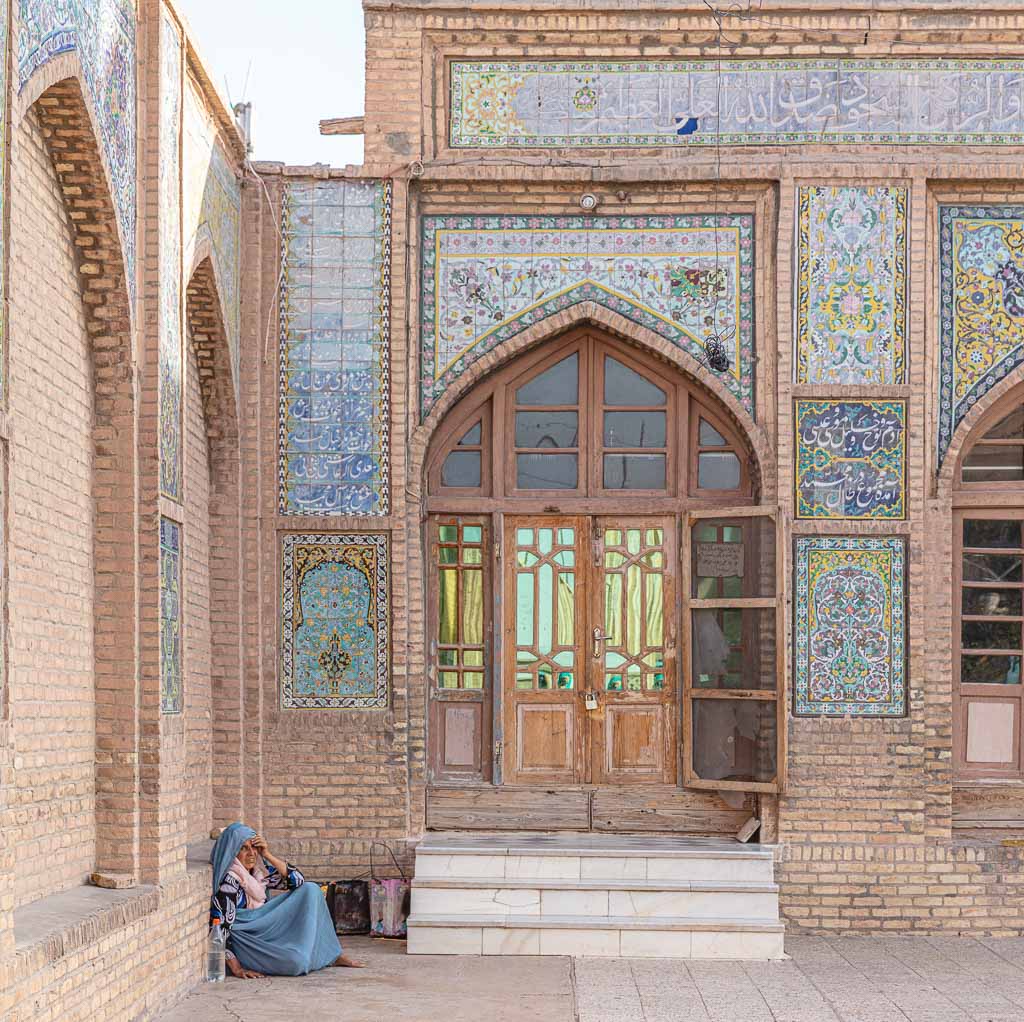
Where To Sleep In Herat
- Budget: Mowafaq Hotel $20/night, double
- Midrange: Kakh Hotel +93 79 982 8245
- Midrange: Herat Bustan Hotel +93 72 879 0132
- Splurge: Nazary Hotel Starting at $90/night, double
How To Get In & Out Of Herat
Kabul, Mazar e Sharif & Kandahar: Herat is quite far from anything else (except the Iran border). Traveling to and from Herat is best done by plane unless you have lots of extra time. A one-way flight will run $90 to Kabul, and to Mazar or Kandahar another $85.
Minaret of Jam: Not easy for comfortable journey, but the bone crunching Central Route connects Herat and Bamyan via the Minaret of Jam. Expect a 12 hour drive between Jam Minaret and another 15 hour drive between the minaret and Bamyan.
Iran: The border at Islam Qala-Dougharoun is currently open to foreigners. This border crossing connects Herat with Mashhad, Iran. There are shared taxis making the run between Mashhad and Herat for 1,100 AFS per seat or 4,400 AFS for the entire car.
Mashhad is about 4 hours from the border and Herat is about 2 hours from the border. I crossed here in March 2019 and found it to be a straightforward process. Read a border crossing report here.
Turkmenistan: Herat is near the border between Turkmenistan and Afghanistan at the Torghundi-Serkhetabat crossing..
There is another border crossing between the two countries, although quite remote at Imam Nazar-Aaqina. Open to foreigners, however, the road is a dirt track and from reports likely will need a 4wd to navigate.

Kandahar
The predominantly Pashtun and largest city of Southern Afghanistan. In late March 2019, I finally visited Kandahar and again in 2021.
It is generally recommended that you have someone with you that can understand and speak Pashto with you in Kandahar as Pashto is the predominant language spoken in the south of Afghanistan. Check out my post: Kandahar in photos & travel guide for more information on visiting southern Afghanistan’s largest city.
What To See In Kandahar
- Mosque of the Cloak of Prophet Mohammed: One of the holiest sites in all of Kandahar. It’s believed that the cloak worn by the Prophet Mohammed during the 621 Night Journey is housed here
- Ahmed Shah Durrani Mausoleum: Sat on the grounds as the Mosque of the Cloak, this is the tomb of Ahmed Shah Durrani, the founder of the nation of Afghanistan
- Chilzina: Meaning 40 steps, this massive staircase climbing up a rocky outcrop on the western outskirts of Kandahar was once attached to a citadel and served as a strategic lookout. Similarly today, it is currently being used as a security lookout. You’ll need to enquire with the commander posted there if he will allow you to climb up
- Mausoleum of Baba Wali: Built to honor a highly regarded tribesman, Baba Wali sits overlooking the Arghandab River. Unfortunately, the frontlines have crept closer to the city and are now only 2 kilometers from Baba Wali, so visiting isn’t recommended as of 2021. But do ask locally once you arrive if it’s safe or not to visit
- Mausoleum to Mirwas Khan Hotak: The tomb to influential Mirwas Khan Hotak, of the Ghilji Pashtun tribe. Don’t miss out on going inside, the colorful paintings on the interior are quite impressive
- Sra Jama: The Red Mosque as its commonly called was frequented by Mullah Omar. In 2021 the mosque has underwent extensive restoration
- Eid Gah Mosque: Located on the north side of the city, Eid Gah is one of the largest mosques in Afghanistan. Largely funded by Mullah Omar, the mosque can house thousands of worshippers at once
- Mosque of the Hair of the Prophet Mohammed: Located in the Old City, it’s believed that the hair of Mohammed is stored here
- Kandahar Museum: Learn more about the history of the city as well as the rest of the country
Check out: Kandahar in Photos & Travel Guide

Where To Sleep In Kandahar
- Budget: Armani Hotel $22 USD/night, dbl (email: [email protected])
- Midrange: Continental Guesthouse $55 USD/night, double
Getting In & Out Of Kandahar
The fastest way to reach Kandahar is by flight. You can go by road from Kabul via Wardak, Ghazni and Zabul just know that it makes for a long trip in a single day. If going overland, consider spending a day and night in Ghazni City en route to break up the journey.
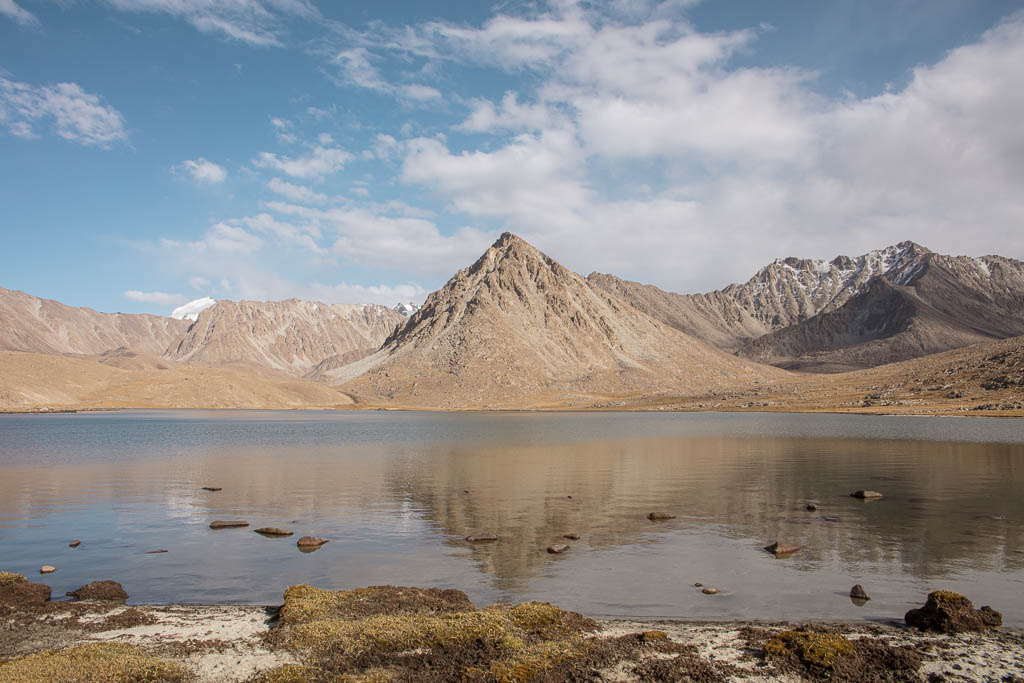
Wakhan Corridor
Most who come to the Wakhan Corridor will trek in the remote Pamir Mountains, many of which will go to meet Kyrgyz nomads that live beyond Sarhad e Broghil near Chaqmaqtin Lake in the Little Pamir.
The Wakhan Corridor for the longest time was considered the only safe region of Afghanistan with little risk to visitors (besides the Afghan colon cleanse or falling off a mountainside).

What To Do & See In The Wakhan Corridor
- Trekking: The Little Pamir, Great Pamir & Hindu Kush Mountains all offer prime trekking climbing
- Meet Kyrgyz Nomads: This small group of people live in the remote Little Pamir and around Chaqmaqtin Lake
- Visit Wakhi settlements: The Wakhi inhabit much of the Pamir Mountains and of course, the Wakhan Valley
- Trek in the Noshaq Valley or summit Mt. Noshaq: Noshaq is Afghanistan’s highest peak at a staggering 7,492 meters. It’s a technical climb. For those just wanting to trek in the area, it’s possible to make the journey to base camp
- Explore the towns and villages along the Wakhan Corridor Road: The Afghan Wakhan is dotted with villages, large and small along this extremity of Afghanistan

Where To Sleep In The Wakhan Corridor
Most will spend at least their first night in the Wakhan Corridor at Marco Polo Guesthouse as they wait for permits to be arranged. There are guesthouses available in Qazideh (Malang Darya’s Family Home), Khandood, Qala e Panja and Wuzed. Most will range from $15-30 USD per night including meals.
Most who visit the Wakhan come to trek, so plan to camp. I recommend bringing your own tent and sleeping bag at least, although guides can usually find one for rent for you if needed.
- Budget: Marco Polo Guesthouse $25 USD/night
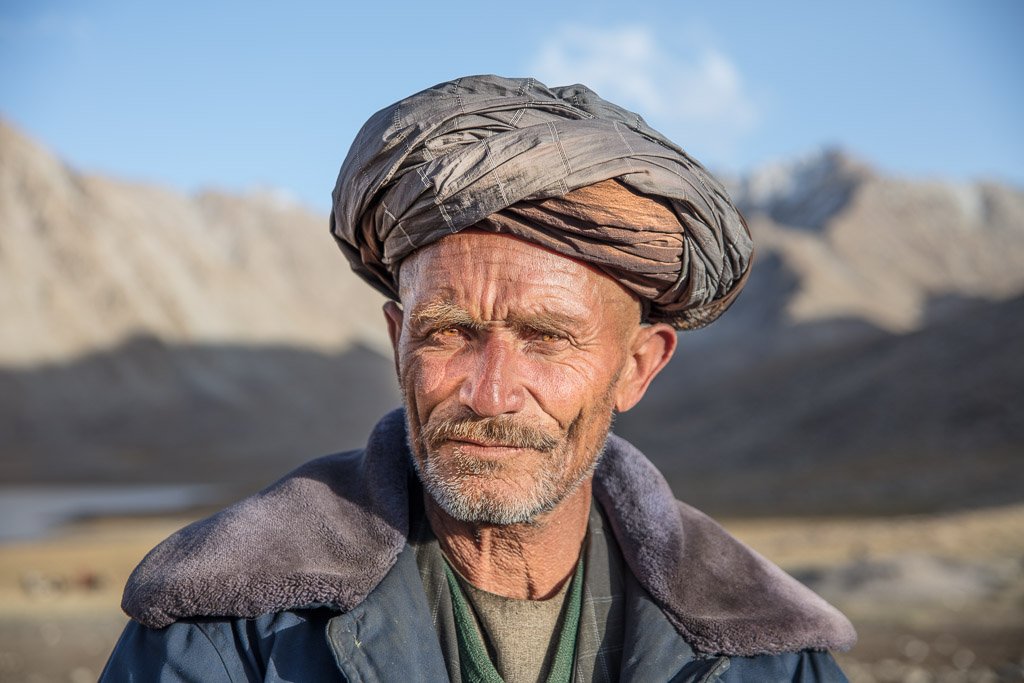
Guides In The Wakhan Corridor
I personally recommend Malang Darya’s company Big Little Pamir Travel. You can contact Malang & his team via their new website Wakhan Adventure or by phone +93 794766067
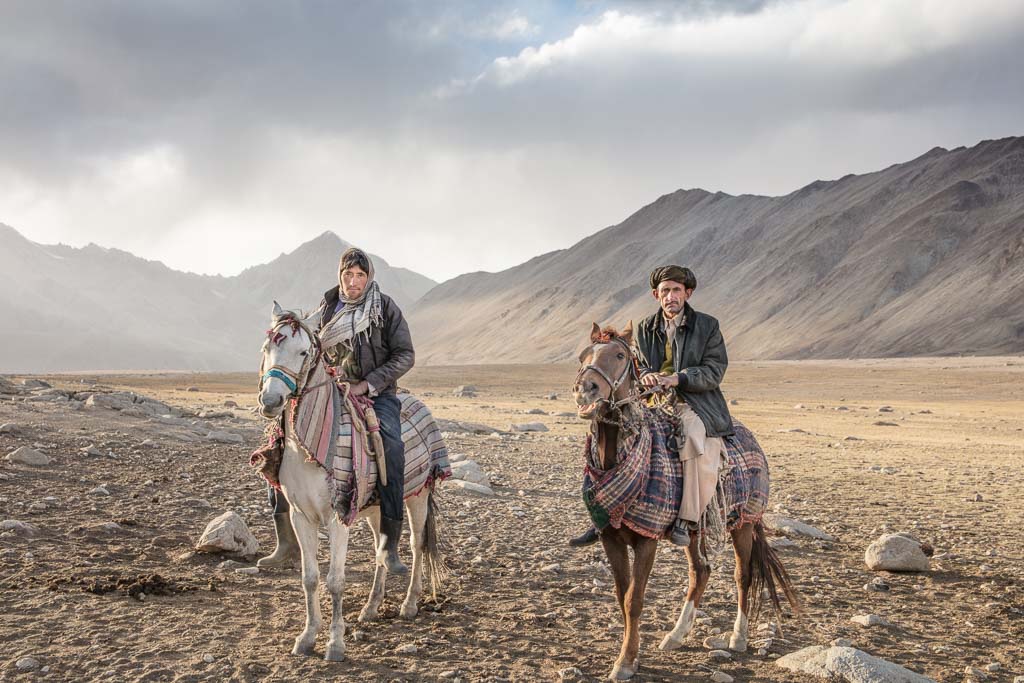
Getting to and from the Wakhan Corridor
The quickest way to reach the Wakhan at present is by entering Afghanistan at the Tajik border at the Shirkhan Bandar Crossing. From there its and hour to Kunduz City, five more to Faizobad and another three hours to Ishkashim.
More Posts On The Afghan Wakhan
- Photos From The Afghan Wakhan Corridor
- What It Was Like To Travel As A Solo Female Through the Afghan Wakhan
- Tajikistan-Afghanistan Border Crossing At Ishkashim
Kunduz
The only reason you will likely find yourself in Kunduz is if you are either coming from or leaving towards the Tajik border or heading toward the Wakhan Corridor and/or Badakhshan Province from elsewhere in Afghanistan.
There isn’t much in way for traveler to do and see in Kunduz, most of the province is comprised of undulating hills, important to the nation as an agricultural region being nicknamed “the hive of Afghanistan” owing to it grain, wheat, and millet production.
If passing through Kunduz, you will almost certainly go through Kunduz City, the provincial capital with a busy city center. Most travelers, if coming from Tajikistan, will need to visit the Ministry of Foreign Affair s for an approval stamp on your passport (located at 36.711904, 68.867458).
You will see a fortress on the northside of the city, though this looks top now be used as a military garrison these days.
Where to Stay and Eat in Kunduz
You will most likely will not spend any time in Kunduz, but there are a few chaikhana restaurants serving up typical Afghan fare (breakfast kebab, anyone? True story) around the city center and very basic guesthouses to choose from.
If you are looking for more amenities (such as A/C) it would be best to head west toward Mazar e Sharif and spend the night there but it is a 5 hour drive away.
Baghlan
Baghlan, similar to Kunduz is mostly a place travelers end up coming from the Tajik border via Kunduz and will either continue toward Mazar e Sharif or Kabul from the bustling provinicial capital city of Pul e Khomri.
That said, parts of Baghlan you’ll pass through are quite scenic, with verdant rice paddies filling otherwise arid valleys.
Minaret of Jam
The Minaret of Jam is finally possible to visit once again, though it’s not the most pleasant journey to reach. It’s also a place that you have to want to visit as it’s not really a place you would just be passing by on your way elsewhere.
Dating back to 1190, the Minaret of Jam is one of the best remaining pieces of Ghorid architecture left standing (albeit leaning over) inscribed with Kufic and Naskhi scrips. It sits at what was once the capital of the Ghorid Empire onthe shores of the Hari River, a city named Firuzkoh (meaning turquoise mountain).
How to get to and from the Minaret of Jam
From Bamyan town you will need to make a 9-10 hour drive on rough roads beyond Yakawlang to reach Ghor City and from Ghor City it will take another 4-5 hours to reach the Minaret of Jam.
If approaching from Herat, expect 12 hours on worse roads than those coming from Bamyan to reach the Jam Minaret.
There is public transport that goes through this central route road, but as this is used by people to get from one place to another you will need to know where to get out and walk the remainder of the way.
Because of the poor road conditions you may want to opt to hire a 4WD vehicle from either Bamyan Town or Herat. Expect a fee of around $75 USD per day, guesthoues can usually help you make arrangements.
Where to Stay at the Minaret of Jam and in Ghor City
Just next to the minaret a camp has been established where you can spend the night now, though everyone I encountered said the only months it’s warm enough for this June-August.
If planning to spend the night in Ghor City, before and/or after your visit, there are a handful of guesthoues, usually upstairs from a restaurant. Don’t expect any frills, but they’re cheap places to lay your head for a night.
Wardak
Wardak isn’t popular on the Afghanistan tourist track, but you may find yourself passing through here from Kabul to Bamyan or Kabul to Ghazni.
The capital, Maidon Shar is a bustling bazaar town, but is still quite small- I wouldn’t say a destination in of itself.
Aside from the passersby, some may consider trekking on the south facing slopes of the Koh e Baba as the range does form the border between Wardak and Bamyan Provinces.
Ghazni
Ghazni is a province with a lot more than I bargained for to explore to be honest.
Most will do a day trip from Kabul to Ghazni City where the main sights include the two Ghazni Minarets and the Ghazni Citadel. The bazaar is also worth a wander and does feature a couple of shops selling antique (and newer versions) jewlery and Hazaragi dresses and bags.
One other spot to explore is what everyone refers to as the “Military Museum” which is mostly just a scattering of broke down old tanks and a downed helicopter strewn along the banks of a dry river bed near the university.
Aside from Ghazni City, the area of Molistan, flanked by mountains, is a beautiful place to visit.
Jalalabad
Hot and sweaty- this is my main memory of Jalalabad- I would not recommend a summer visit. Not to miss en route from Kabul is the massive Surobi Reservoir.
That said, there is quite a bit to see in Jalalabad including
- Qala Shahi
- Hada Museum
- Daroonta Dam (near the city)
- The Mausoleums of King Amanullah Khan, Mohammed Gul Khan Momand, and Abdul Gaffer Khan
Laghman
Most travelers will pass through Laghman on their way toward the Pakistani border post of Torkham from Jalalabad to Peshawar or those heading towards Nuristan.
The northern stretches of Laghman Province are more mountainous and there is one route not too far west of Jalalabad that heads into the northern reaches of the province and eventually across the border to the village of Du Ab in Nuristan Province.
Kunar
You will enter Kunar from the south from Jalalabad with a nicely paved road extending all the way to the provincial capital of Asadabad (this drive takes about 3 hours).
Most of the province features hot and very humid weather in comparison to the rest of Afghanistan but the drive is scenic with a flooded river valley dotted with rice paddies and terraced villages.
As you approach the northern stretches toward the border with Nuristan the air dries out and the temperatures cool once again.
Nuristan
The land of light, Nuristan- I couldn’t have come up with a better name myself.
Nuristan features a unique population that shared a lot in common with the inhabitants of the Kalash Valleys in Pakistan nearby, but the local population was forcefully (see violently) converted to Islam long ago.
The provincial capital is Parun which is a long bumpy ride from Asadabad over in Kunar Province of about 7 hours one way. Parun features several villages and side valleys to explore, even a cricket pitch that requires a 45 minute hike through the forest to reach from the main and largest village of Parun.
Another area worthy of exploring is Kamdesh, which is reachable in a shorter amount of time and on a better road from Asadabad via a scenic little area called Nari.
There is also a road to Du Ab Village from Laghman Province which can eventually connect you to Panjshir via Nuristan.
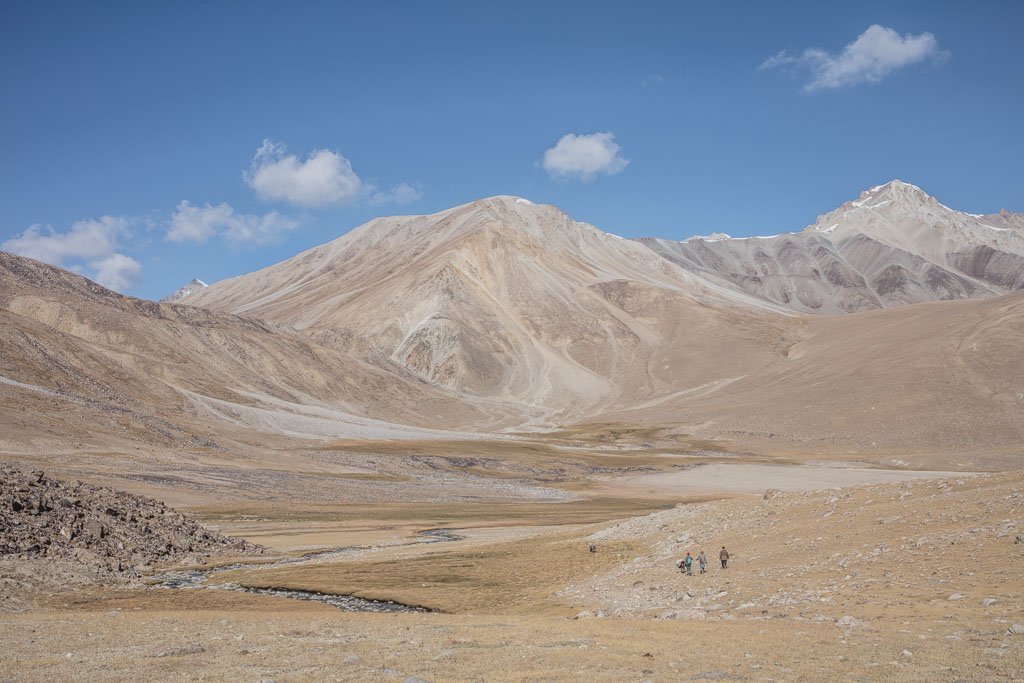
Trekking In Afghanistan
Afghanistan has epic trekking potential from the staggering peaks of the Wakhan Corridor, to the forested mountains of Nuristan, lush and almost subtropical feeling Kunar, the beautiful peaks of Bamyan’s Koh e Baba range, to the Kabul surroudings and the Panjshir Valley.
Most trekkers should head over the border from Tajikistan to explore the Pamir and Hindu Kush Mountains in the Afghan Wakhan. Popular treks in the Wakhan include the trek to Chaqmaqtin Lake in the Little Pamir, treks into the Wakhi Great Pamir, and the trek into Noshaq Valley.
In the ‘Mainland’ of Afghanistan has heaps of trekking potential but so much has been unexplored. Most established would be the Shah Foladi area of Bamyan and in the Panjshir Valley. If wanting to trek around these areas you should definitely contact an experienced local guide to help plan and guide you there.
Nuristan hosts countless trekking adventures and even a possibility to connect with Badakhshan via Jaa Valley.
Kunar, Laghman, Daykundi, and Paktia all stand to be great trekking destinations though expect to be following shepherding trails.
Check out all of the hiking possibilities in Bamyan Province

Afghan Holidays & Festivals
- Nowruz
- Ashura
- Independence Day
- Ramadan & Eid al Fitr
- Mavleed al Nabi
- Eid al Qurban
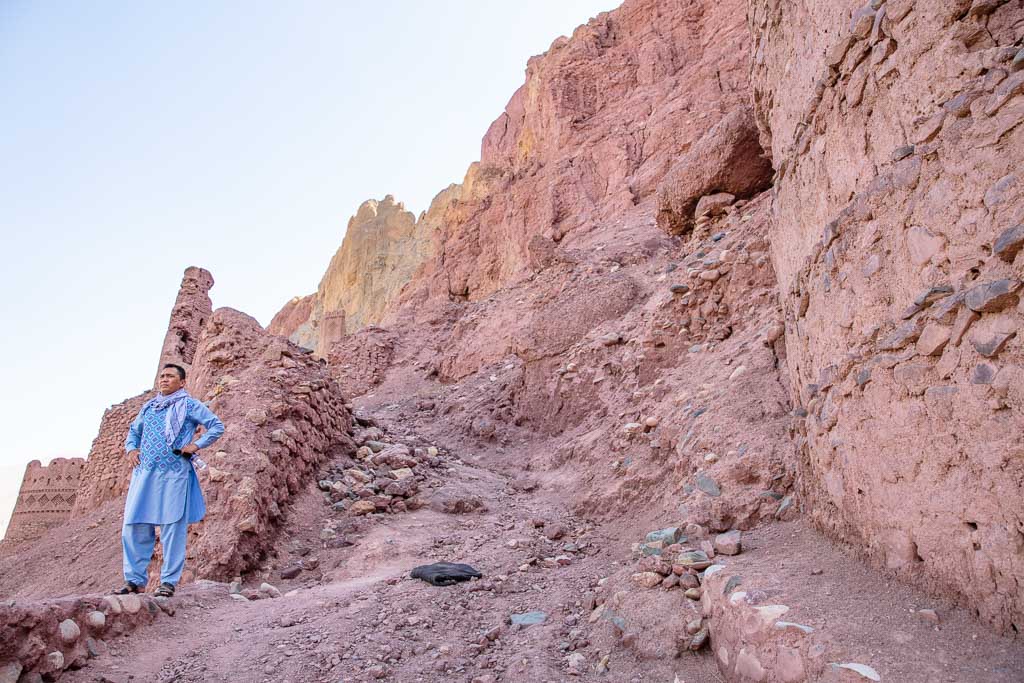
Tour Operators & Guides
Mainland Afghanistan: Let’s Be Friends Afghanistan – Noor started the company in 2015 with his colleague Sakhi and guides along with his brother Mahdi. Noor, Sakhi & Mahdi are both knowledgable and professional.
Wakhan Corridor: Big Little Pamir Travel – Malang and his team are experts on the Wakhan, Hindu Kush, and Pamir region and will put together some unforgettable itineraries.
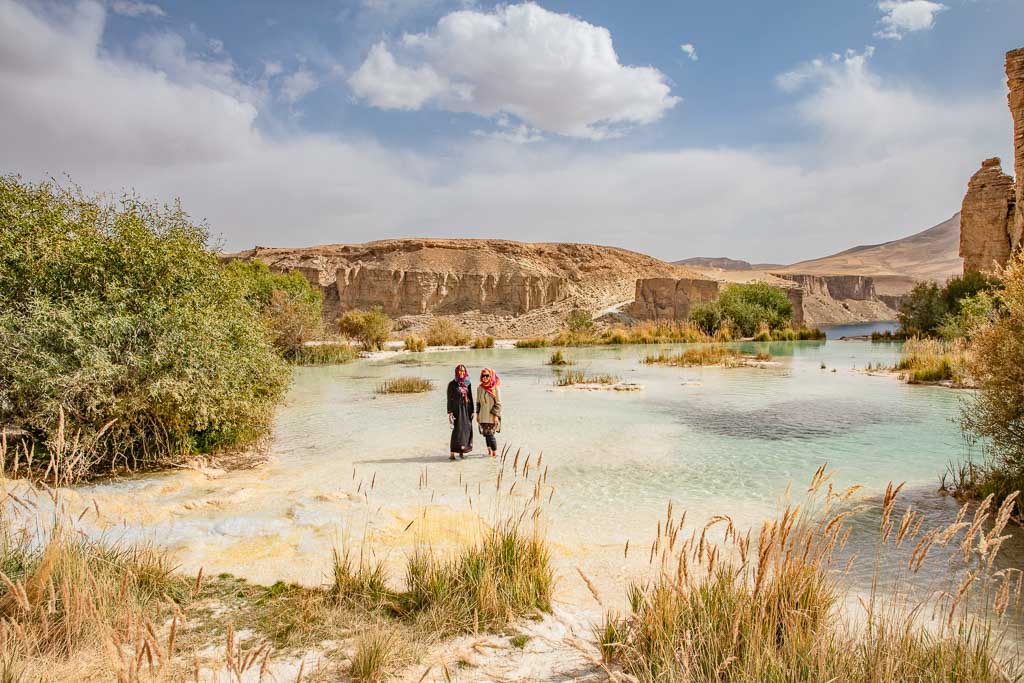
Afghanistan Travel Budget
Afghanistan isn’t necessarily that expensive once you’re there, but what really will hit you in the wallet is the flights you’ll need to take between cities at $50-100 USD a pop.
Afghanistan’s security situation is fairly unstable and things can change in an instant, so it is recommended to spend the extra cash to travel with a local guide or at very least know locals that can update you on the constantly changing situation.
$60 USD Per Day
Traveling independently, using public transport within cities, flights between cities, staying at guesthouses, and eating at local eateries
$110 USD Per Day
Traveling with a guide, car hire within cities, flights between cities, midrange accommodations, and a combination of local eateries and finer restaurants
$200 USD+ Per Day
Traveling by guided tour, private car hires within cities, flights between cities, higher-end accommodations, and eating at finer restaurants when available
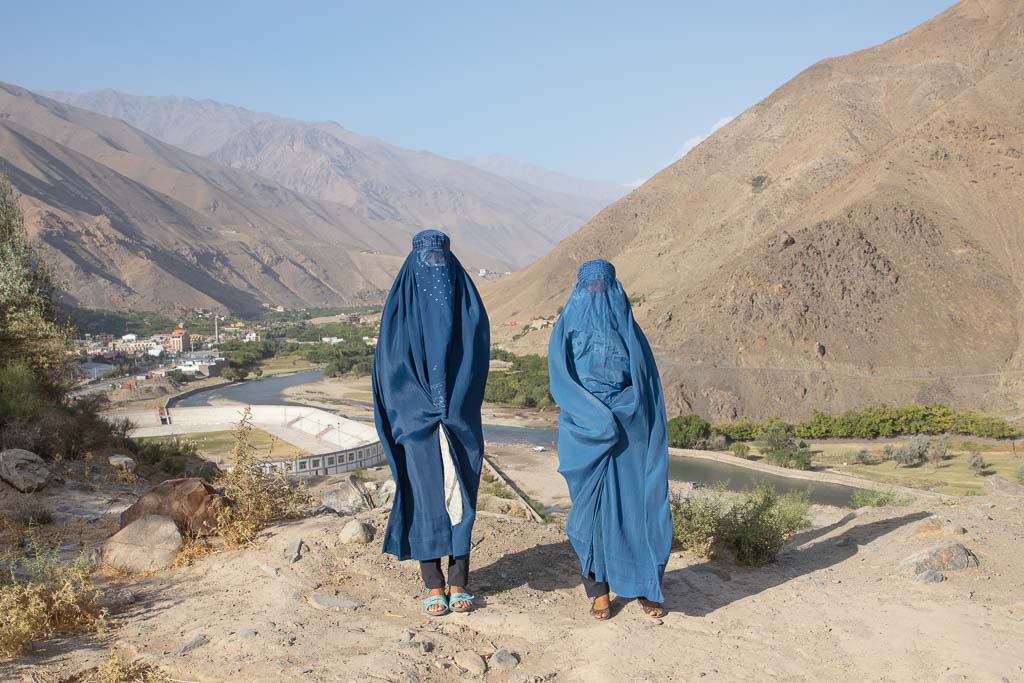
Packing List
- External battery pack– You never know when insurgents or suppliers will cut power in Afghanistan. Very handy in the Wakhan and places where electricity may be non-existent in areas
- Solar charger– To keep electronics charged in remote areas
- Comfortable Walking Shoes– I know some may opt for trainers, but my favorite shoe for milling about is the Isabella Flat that Crocs makes (don’t laugh)
- Hiking Boots– Necessary for those headed to the Wakhan Corridor or other trekking destinations. My personal favorite is the La Sportiva Nucleo High GTX hiking boot
- Inreach Explorer+– GPS & SOS beacon, that can also send and receive text messages. Delorme/Garmin offers good monthly plans. Great for emergency situations and remote areas
- Water Purifier– I personally use the Katadyn water filter. Tap water in the entire country is unsafe for drinking and natural water sources can be contaminated.
- Headlamp– Useful for the intermittent power outages
- Sunscreen– The sun is pretty intense in summer
- Prescription & Over the counter medications
- Toiletries

Guidebooks
There are not many guidebooks on Afghanistan, let alone anything up to date. But here are a few that may prove insightful and interesting.
- Afghanistan: A Companion & Guide– Packed with info on Afghanistan and its history with photos.
- A Historical Guide to Afghanistan– Granted Nancy Dupree did write this book in the 70’s it’s still a fascinating read even if it’s not up-to-date as far as current events in Afghanistan go.
- Lonely Planet Afghanistan– LP hasn’t put out one of these bad boys since 2007, but handy nonetheless.
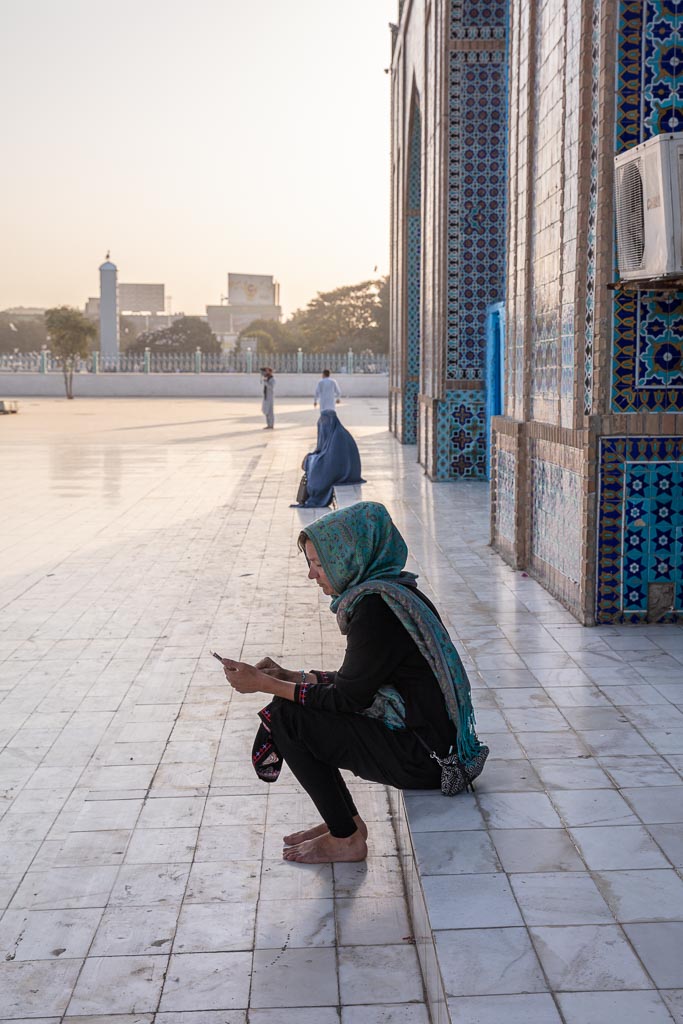
Internet & Mobile In Afghanistan
You’ll find that Afghanistan is surprisingly well-connected given its situation.
WiFi
WiFi is available at many hotels in Afghanistan, though the speed and quality of your experience can vary widely. I was pleasantly surprised that every hotel and guesthouse I’ve stayed at in major cities had WiFi that functioned most of the time. With that said, don’t expect to find WiFi in smaller towns, the Wakhan Corridor, or more remote destinations.
Mobile
SIM cards and top-up cards are available throughout the country and are cheap. Roshan, Afghan Wireless, Etisalat and MTN are the companies you’ll come across in Afghanistan.
I have a Roshan card and it’s worked all over the country, including some of the main villages in the Afghan Wakhan. Note that in the Wakhan Corridor that depending on where you’re at and if very close to the Tajik border you can sometimes get reception on Tajik T-Cell and MegaFone SIM cards.
Prices for SIMs with some credits on them are typically around 50 AFS. Prices for data can range from 150-350 AFS per GB. I’ve personally found Roshan and Afghan Wireless to typically be the cheapest options.

Health & Safety
As you guessed it, Afghanistan is neither a safe or ‘healthy’ destination to visit.
Safety
In terms of security, Afghanistan is the most secure it has been in decades, that said, it was very much traded for human rights in a sense. I still would not go to say Afghanistan is a safe destination.
Consider Hiring A Guide
Hiring a local who’s in the know on security situations and can help you with the ins and outs of travel in Afghanistan is greatly helpful. I personally recommend Mahdi and Liaqat of Let’s Be Friends Afghanistan.
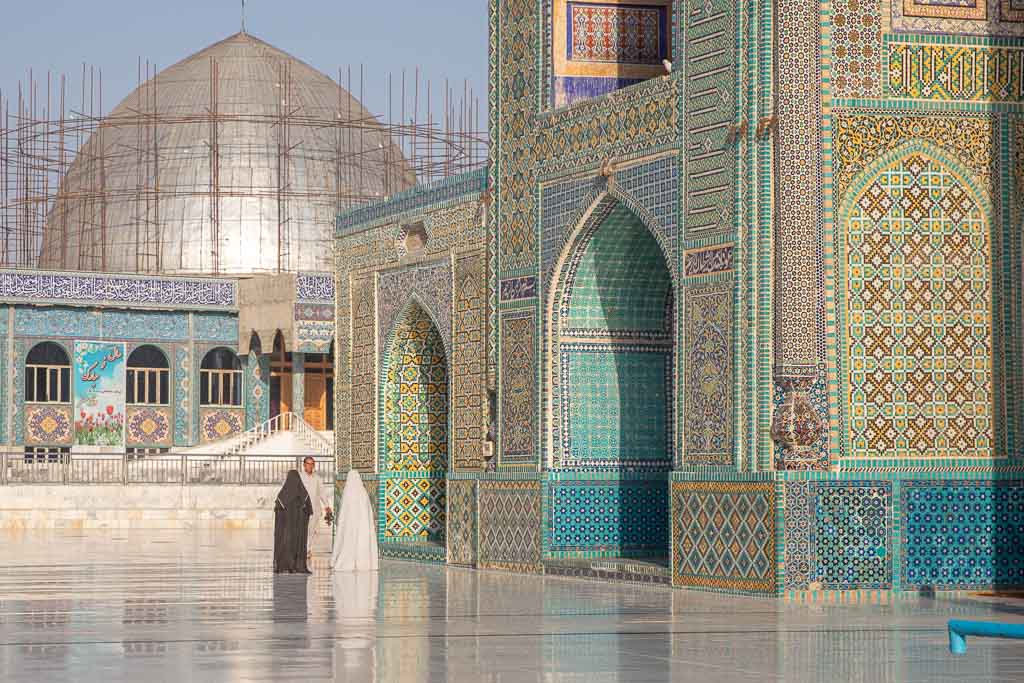
Dress Like An Afghan
Trying to look like a local is most definitely recommended to avoid standing out in a crowd. Afghans are a much more diverse lot than you may have expected– you will see some people with nearly every shade of hair color and eye color. Dressing the part will definitely help you blend in.
On the topic of blending in- do try to speak quietly if you’re speaking English or whatever native language you speak at home when out and about in public, especially on public transport. People do get paid by the Taliban to turn people in, so to avoid someone setting up troubles ahead it’s best to keep your foreignness cloaked well.
Don’t Tell People Where You’re Staying Or Where You’re Going
This goes along with the above-mentioned speaking quietly. It’s best not to tell strangers where you’re staying or where you’re headed next, someone could arrange trouble for you ahead.
Afghans are curious in nature and many are just kind people– but it’s best to give vague answers I’ve found to not be rude but also not divulge any useful information.
Change Up Your Routine
I learned this one back when I was traveling in Yemen. Don’t have the same daily routines in any place you visit. Say you walk to the Blue Mosque each day when you’re in Mazar- take a different route each time.
Avoid going to the same places at the same times each day for the same reasons I’ve covered above.
Know Which Embassy or Consulate To Turn To
In the event that you need help know which consulate or embassy can help you. Some countries have representation in Afghanistan while others do not. If your country falls into the latter category, know which country can help you in the event you need it. Check out who has diplomatic representation in Afghanistan here.
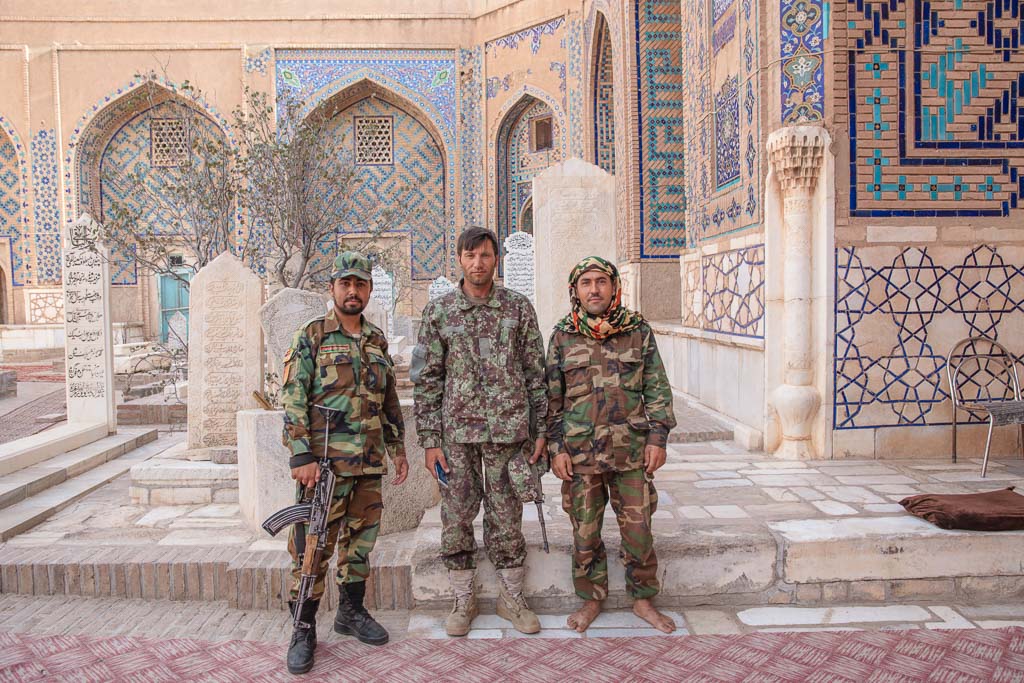
Cooperate With Police
You’ll likely encounter police and/or military checkpoints traveling in Afghanistan, especially if any portion of your trip involves going overland. Sometimes they may not let you go into an area (and typically for good reason), and sometimes they will search your car and bags- just go with the flow and all will usually be fine.
Health
Healthcare is pretty grim in Afghanistan aside from the couple of hospitals and complexes that cater to aid workers and NGOs. It’s highly recommended to take out an insurance policy that covers your travel in Afghanistan and can evacuate you to another country if medical treatment is needed.
Food & Water
Probably the most likely culprit to put a cramp in your Afghanistan travel. Hand washing is a huge deal in Afghanistan. Always wash your hands before meals.
However, sanitary conditions are not of the highest standard and tap water is as an Afghan friend put it ‘deadly’. Good rules to follow are: only drink bottled or purified water, only eat steaming hot foods and avoid ice. Do I personally follow them? Eh, not really.
I can say I did not get sick once on my second trip to Afghanistan. Even eating ice cream and literally every dish warm or cold that sat in front of me. On my first trip I did eat something that wreaked havoc on my insides for about a day.
Vaccines
No special vaccines outside the standard vaccines are recommended for Afghanistan travel. Make sure you are up to date on your vaccines prior to departing.
Dust
Afghanistan is a dusty place period no matter where in the country you are. Bring allergy meds with you to help cope with the generalized dustiness you’ll experience traveling Afghanistan.
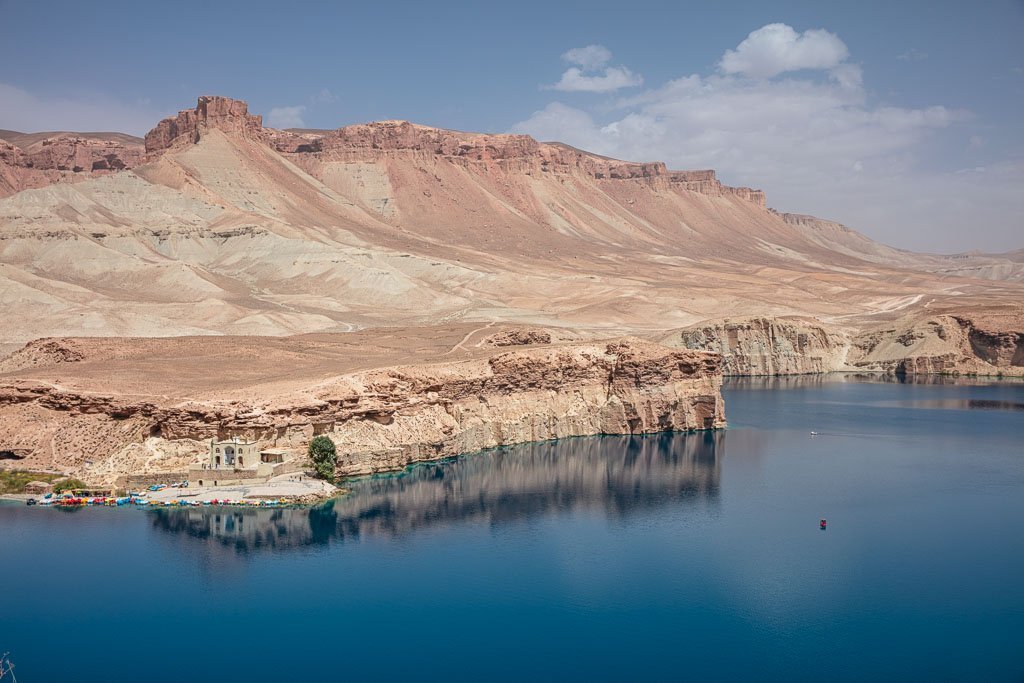
Have Any Questions Not Answered In This Afghanistan Travel Guide?
Ask any of your Afghanistan travel questions in the comments below!
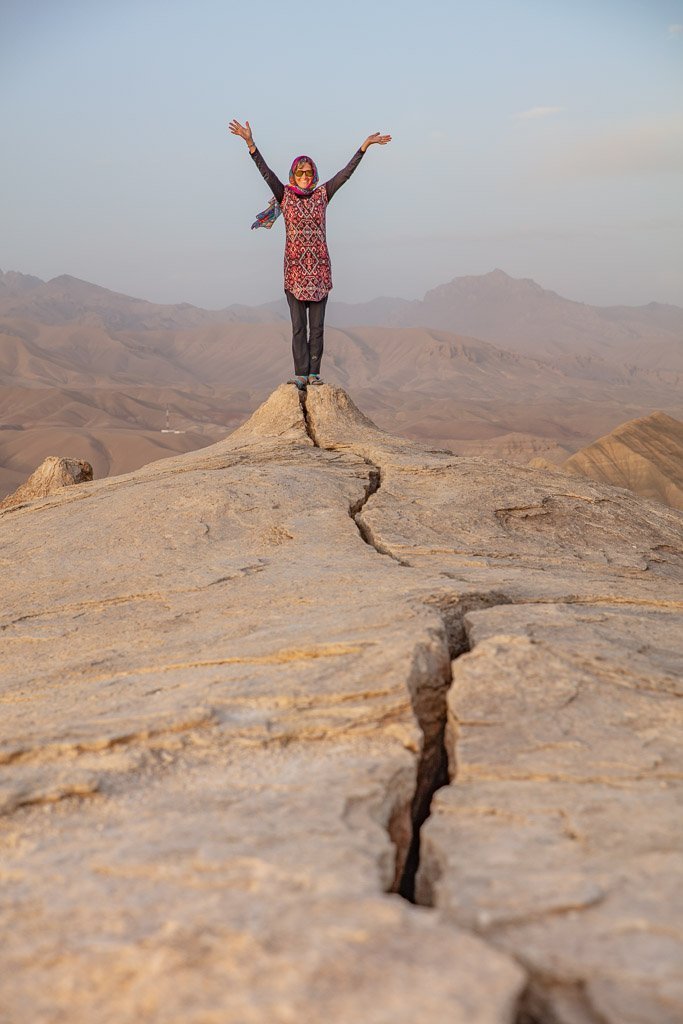


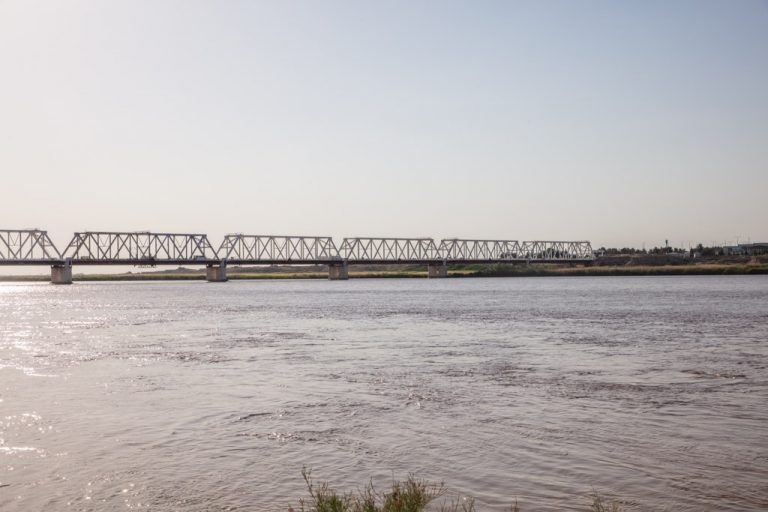
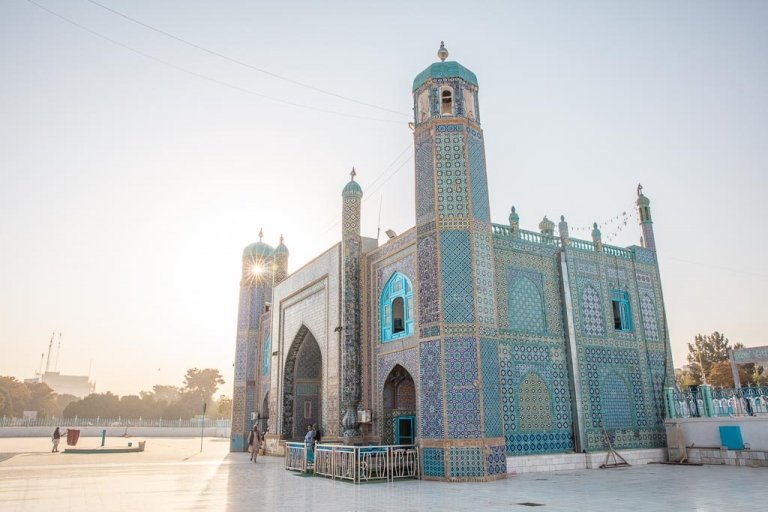
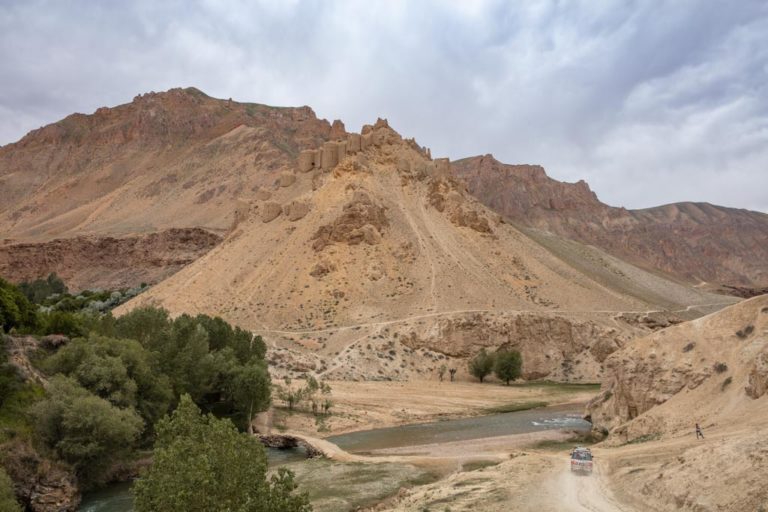
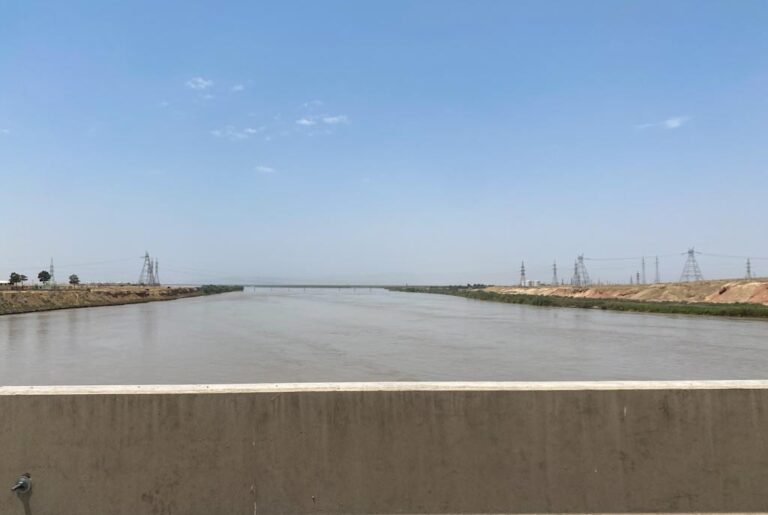


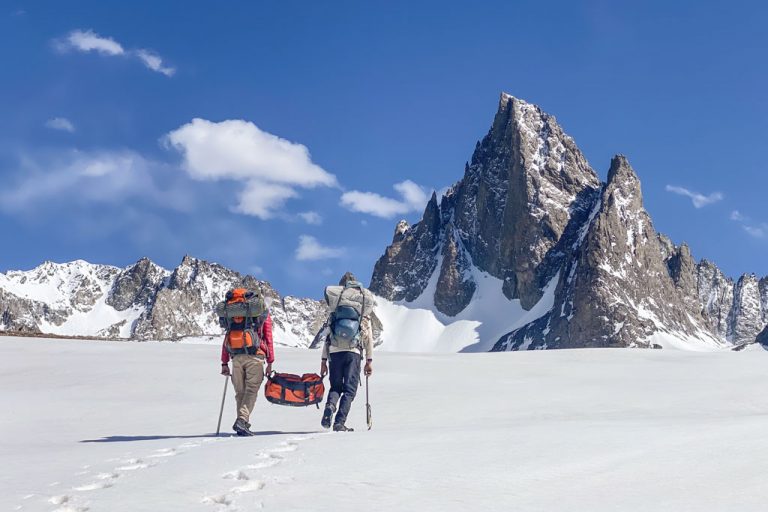
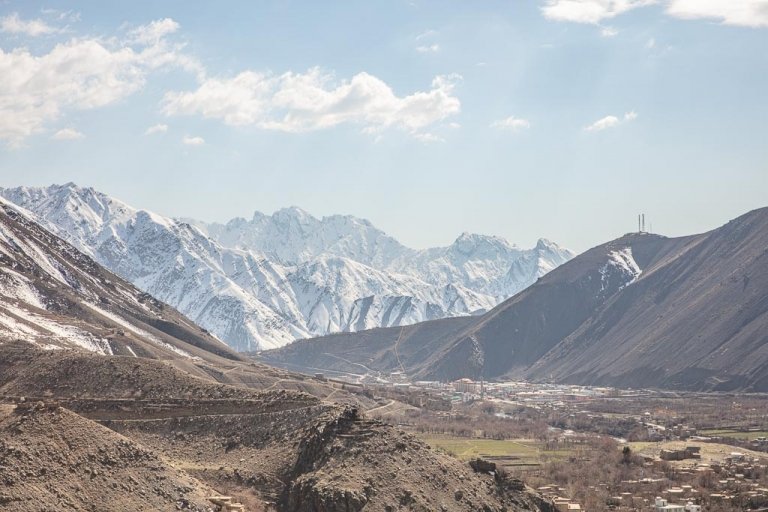


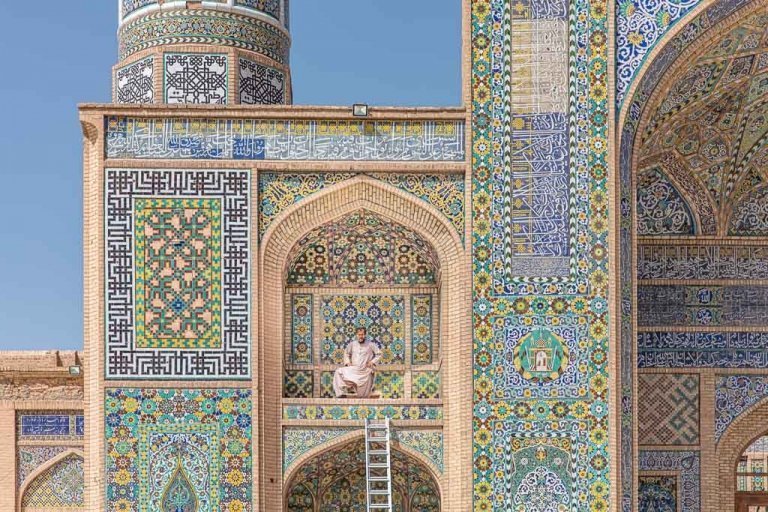


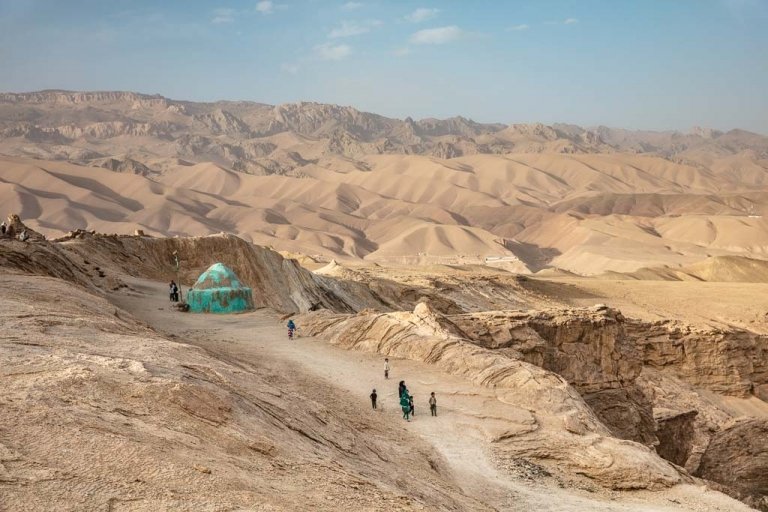

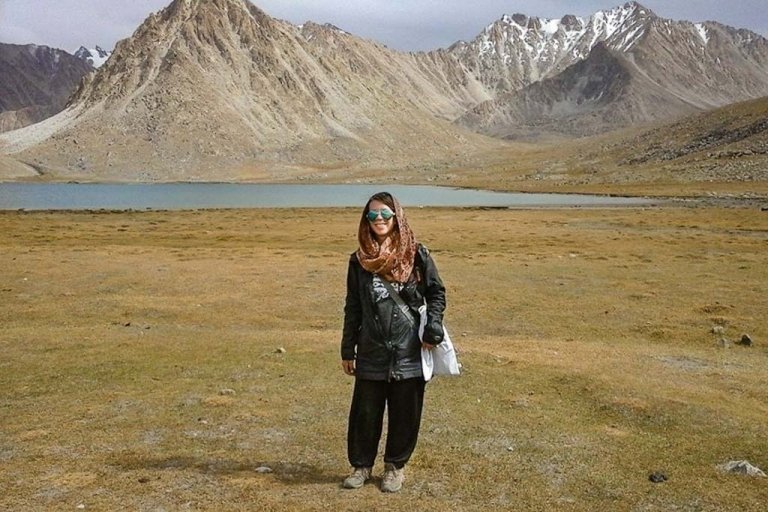
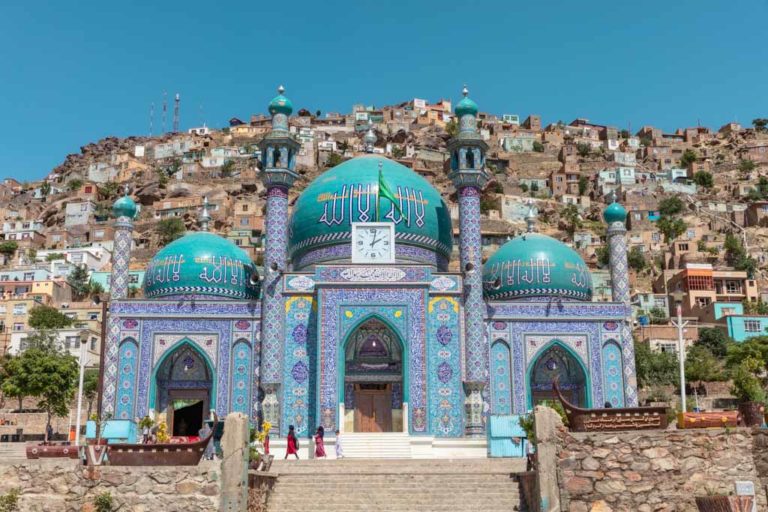
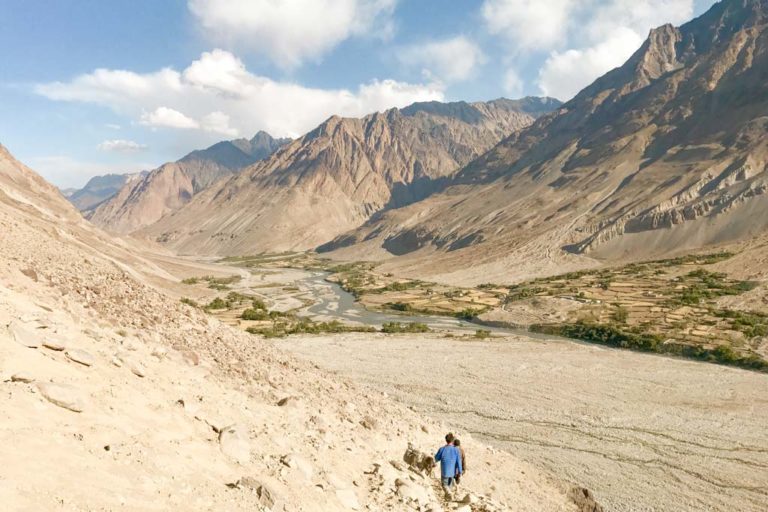

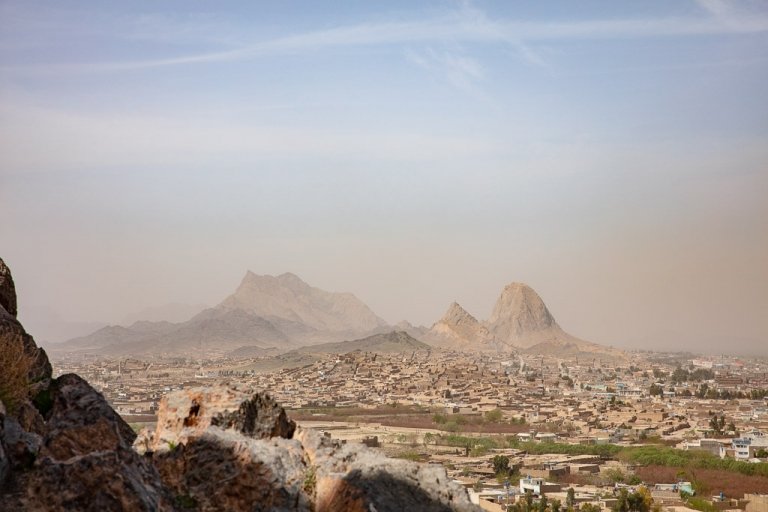
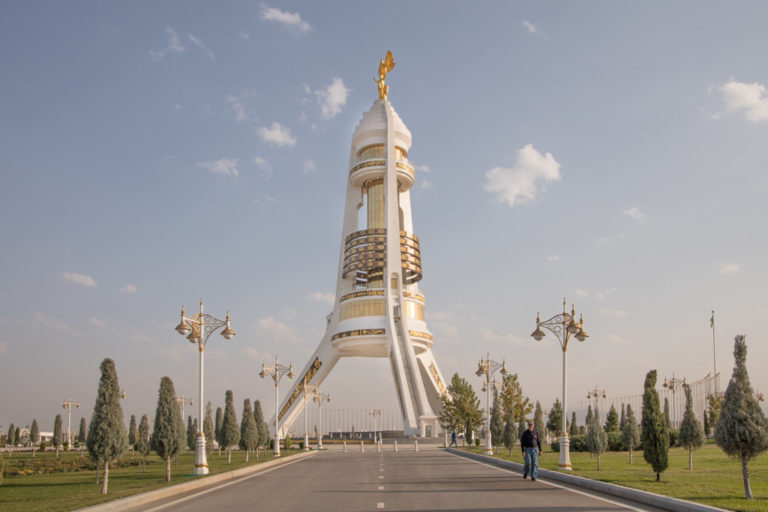
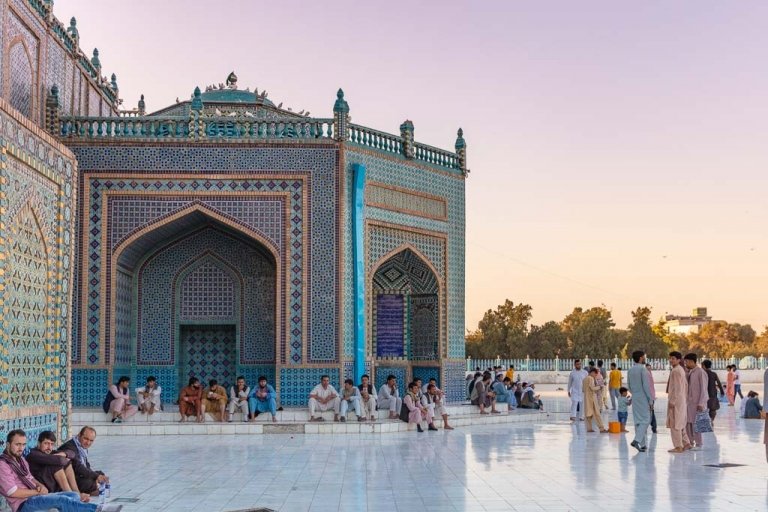

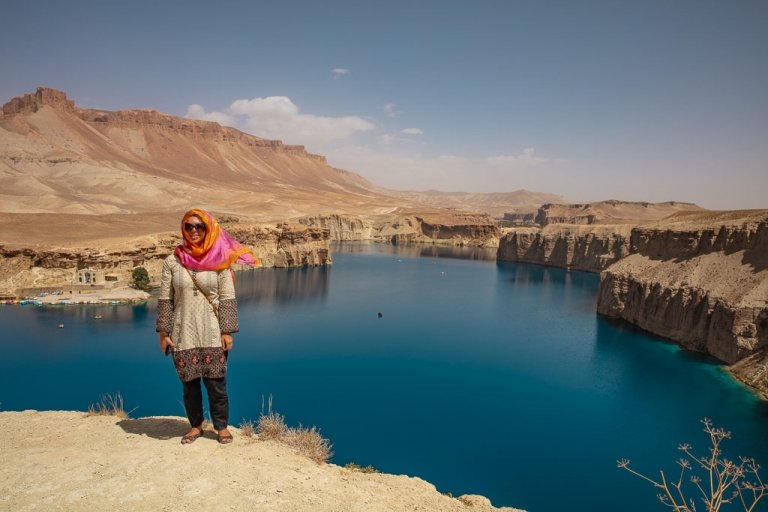
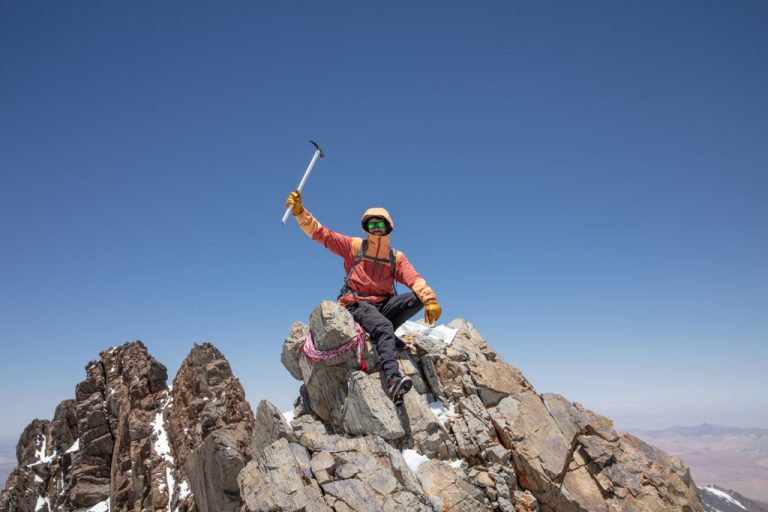
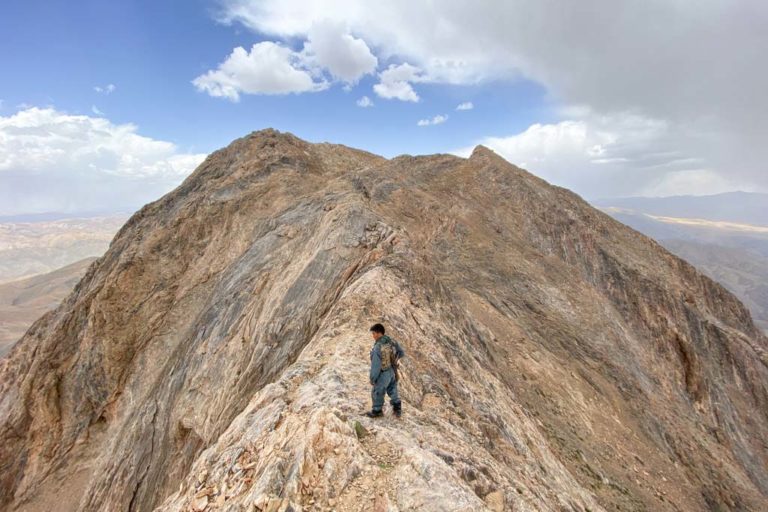


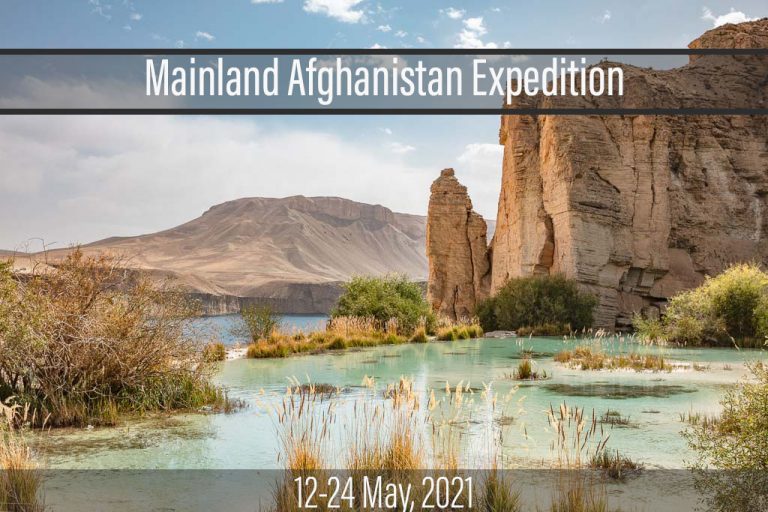

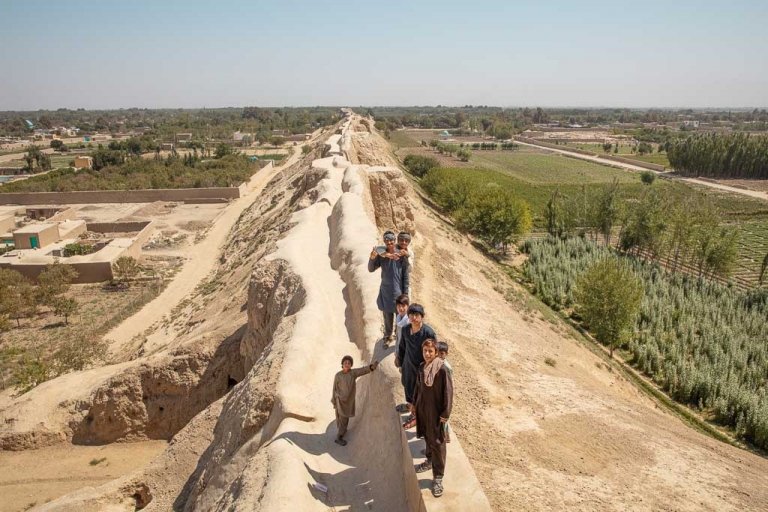
This guide is so detailed and definitely inspires me to go to Afghanistan. Thanks for sharing!
Thank you, Agnes, glad to hear that. I hope you get to visit!
Was fun reading seeing the pictures and reading about trip. I visited Afganistan for a short time in 1964.
We were two young woman in our early 20’s travelling together. We visited Kabul and then by bus via Kandahar to Iran. Quite an adventure. Also I believe it was safer to travel then. We dressed in skirts and shirts and did not cover our heads…. We never had any trouble and as I remember, people were also very nice to us.
Hey Julie,
I bet that was an amazing whirlwind of a trip. When I’ve met people that were able to visit in the 60s and 70s I’m always a bit jealous that you got to see and experience what you did there! I do have a friend that I met a few years back that went on a similar trip in the late 60s or early 70s (I can’t remember off the top of my head at the moment) as part of her bus journey from London to Kathmandu. I just love listening to her stories. I bet you girls had some wild adventures on that trip. Hope all is well!
Nicole
Going to Visit Afganistan next week as I don’t know much about it so I was looking for a blog to know the best things to there thanks for this information. As Know I know What to do there.
Wow Nicole, So many photos in this post that I’ve never seen on you Instagram where I first heard about you. I live in Iran and very much would like to go to Afghanistan one day.
Thank you for this huge pile of useful info!!! I’ve been dreaming to visit Afghanistan one day.
We hope it will re bust again in future.
Me too, it’s great to be back there
I am dreaming of traveling in Afghanistan. Great travel guide.
I hope you make it there one of these days! Afghanistan is such a special place… but the only bad part is I’ve found after visiting you just dream about it more than you did before you went! haha